20 Things You Didnt Know About Archeology
Marco Cantile // Getty Images
fifty of the greatest archaeological discoveries of all time
More than a century agone, Albert Einstein developed his famous theory of relativity. The idea that space and time are linked together means that time travel might exist possible … ane day, one time physicists figure out how information technology works.
Nevertheless, travelers and archeologists have known for centuries that the opportunity to step back in fourth dimension already exists. Yep, actually. By visiting archeological sites effectually the world, yous can come across how the city of Pompeii worked right before it was covered in volcanic ash, the lost Inca citadel of Machu Picchu, incredible cave drawings in Brazil and Spain, and even the wealthy trading hub of Petra—no flux capacitor required. Even just learning nigh archeological findings from domicile, like the Rosetta Stone and its captivating code or a 44,000-twelvemonth-old pictorial story from Sulawesi, Republic of indonesia, offers a deeper appreciation for commonage ancestors and a humbling reminder of our place in the universe.
When it comes to archeological discoveries, you lot've got a seemingly space array of options to read and learn about. So which ones have made the biggest affect on scientists' understanding of humankind? To find out, Stacker took a look at fifty of the greatest archeological findings of all time, based on reports in news outlets (similar National Geographic, Smithsonian Magazine, BBC News, and The Guardian), UNESCO Globe Heritage site listings, articles from archaeology magazines, and other publications. The listing includes important discoveries from effectually the earth, ranging from the Americas to Asia, and even Antarctica.
While we're all stuck at home, there's no improve way to send yourself to a unlike time and place than past learning well-nigh fascinating archeological sites and discoveries beyond the world. Click through to see 50 of the greatest archeological discoveries made throughout history—and don't exist surprised if they inspire hereafter travel plans, one time it's safety to explore the world once again.
You may also like: Oldest cities in America
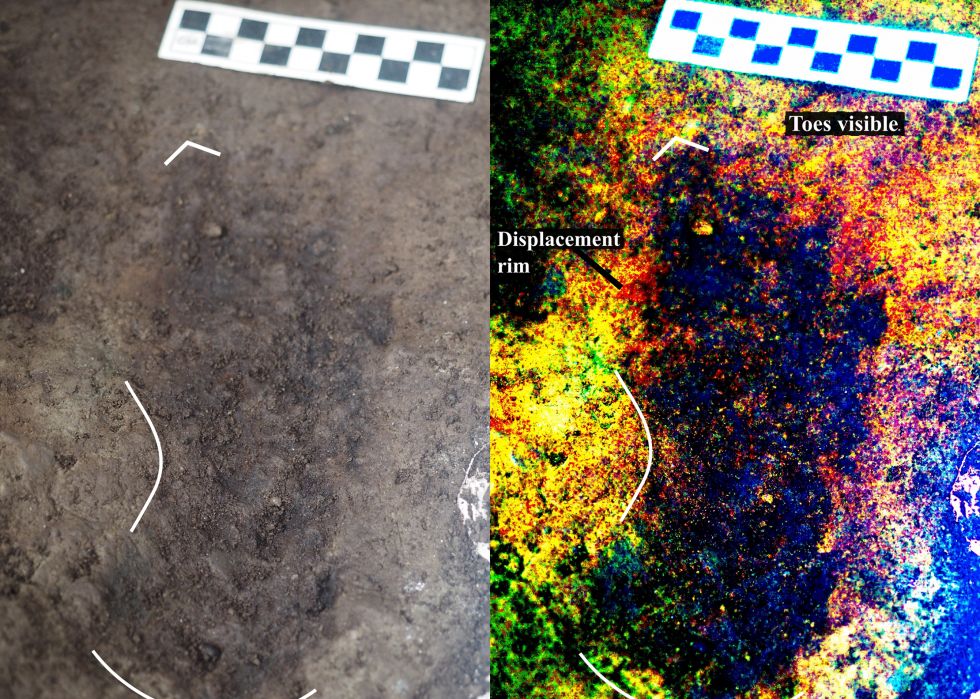
i / 50
McLaren D, Fedje D, Dyck A, Mackie Q, Gauvreau A, Cohen J // PLoS Ane
Oldest-known human footprints in North America
In 2018, Live Science reported on a remarkable discovery made by anthropologists in British Columbia: the oldest-known human footprints in North America. The 29 track marks are reportedly xiii,000 years old, further supporting the idea that people were living in western Canada at the determination of the final ice age.
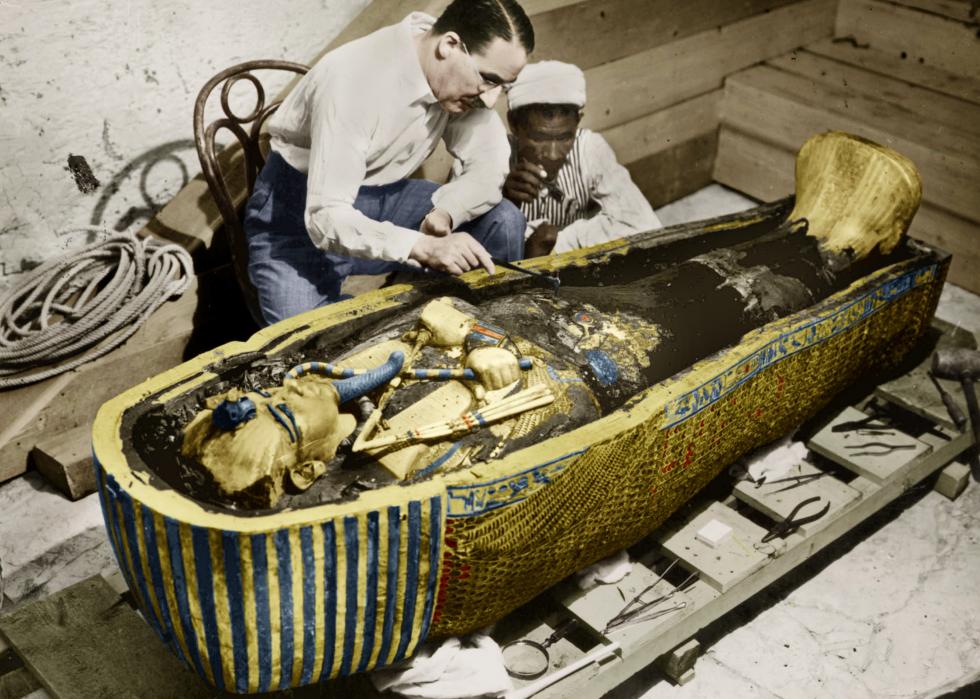
2 / fifty
Tutankhamun's tomb
Egyptologist Howard Carter unearthed the tomb of the pharaoh Tutankhamun as he was working on the excavation of the Valley of the Kings in 1922. The densely packed archeological discover took eight years to certificate and empty due to information technology beingness left in disarray after multiple robberies.

3 / fifty
Andrii Orlov // Shutterstock
Borobudur
Locals in Indonesia led the British ruler of Java, Sir Thomas Stamford Raffles, to the site of Borobudur, the world's largest Buddhist temple, in 1814. The roughly one,200-year-old temple features 72 openwork stupas, each of which holds a statue of the Buddha. Still a place for Buddhist pilgrimage, the archeological site reflects a combination of indigenous Indonesian scenes with an Indian influence.
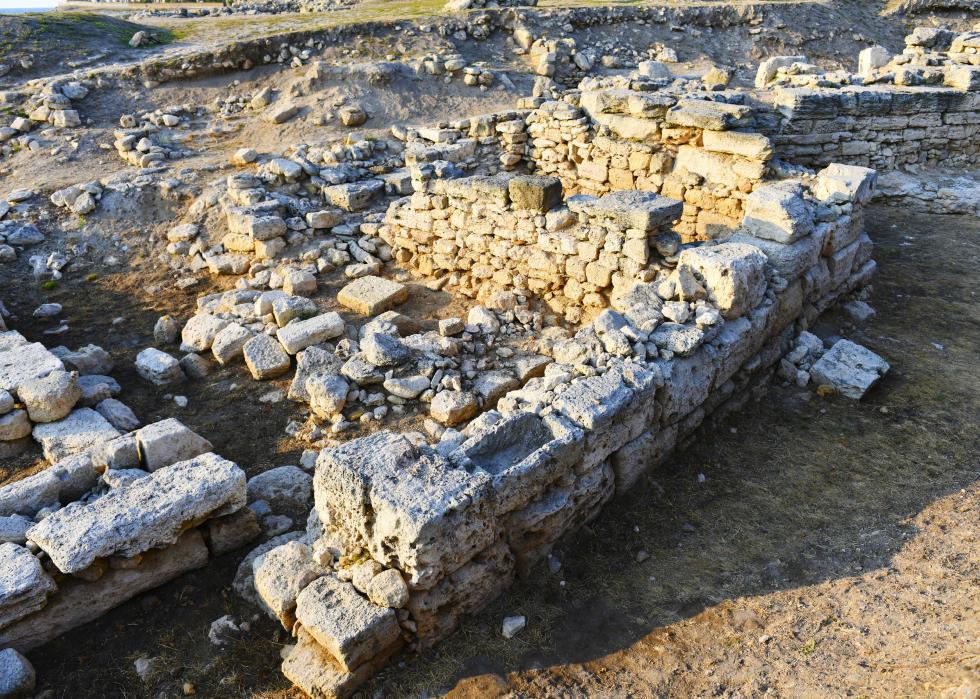
4 / l
Sergei Bolshakov // Shutterstock
The Lost City of Tenea
Greek archeologist Eleni Korka finally found the Lost City of Tenea in 2018, mark the stop of a 34-year search for the Trojan-founded metropolis, per Artnet. Archeologists have since establish a whopping 200 coins on the site, demonstrating the city'southward incredible wealth, which had been discussed in ancient texts.
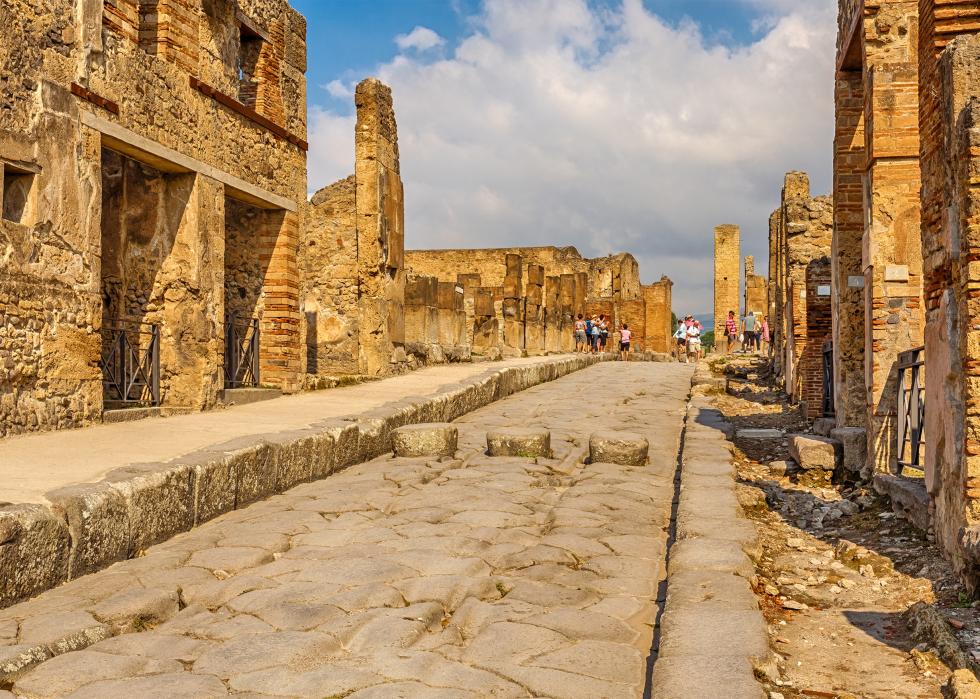
five / l
BAHDANOVICH ALENA // Shutterstock
Pompeii
When Mount Vesuvius erupted in A.D. 79, information technology preserved the Roman city of Pompeii (along with the final moments of its fated residents) under a roughly twenty-pes layer of pumice stone and ash. The archeological site, which includes fresco-covered homes, was discovered more than i,400 years later by builder Domenico Fontana. Now a popular tourist site, the archeological site of Pompeii offers an understanding of cultural, religious, and political life in this aboriginal city.
You may also like: Libertarian, gerrymandering, and l other political terms yous should know
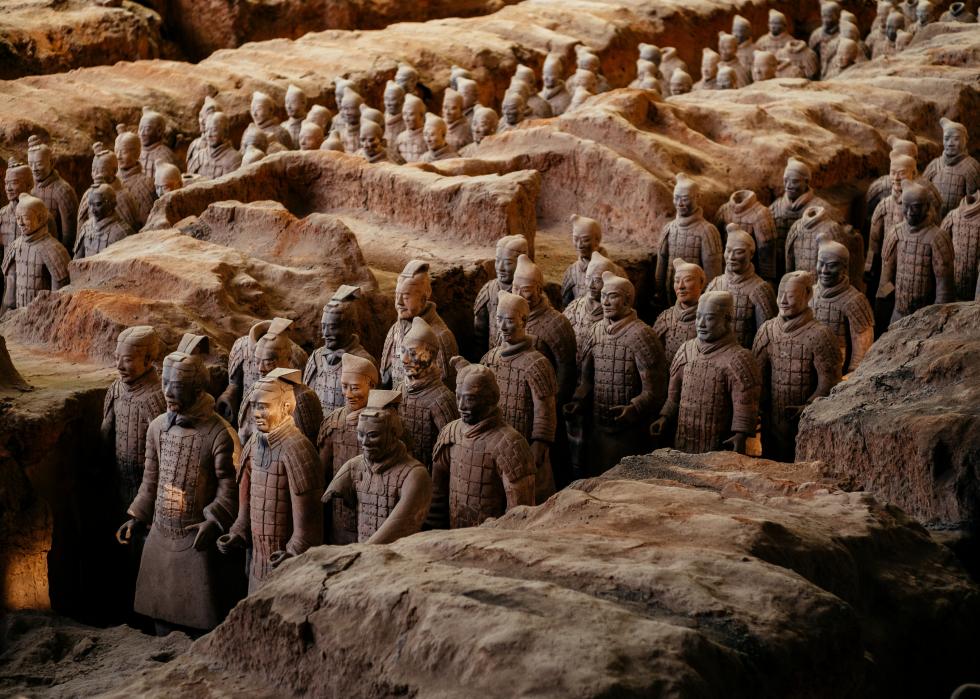
6 / fifty
costas anton dumitrescu // Shutterstock
Terracotta warriors
China's first emperor, Qin Shi Huang, was cached in a tomb protected by an army of 8,000 life-size clay soldiers—each with unique hairstyles, postures, and facial features—when he died in 210 B.C. Farmers discovered the terracotta warriors in 1974, and since so, investigations accept led archeologists to believe that the emperor's tomb is a massive replica of the urban center of Xi'an.
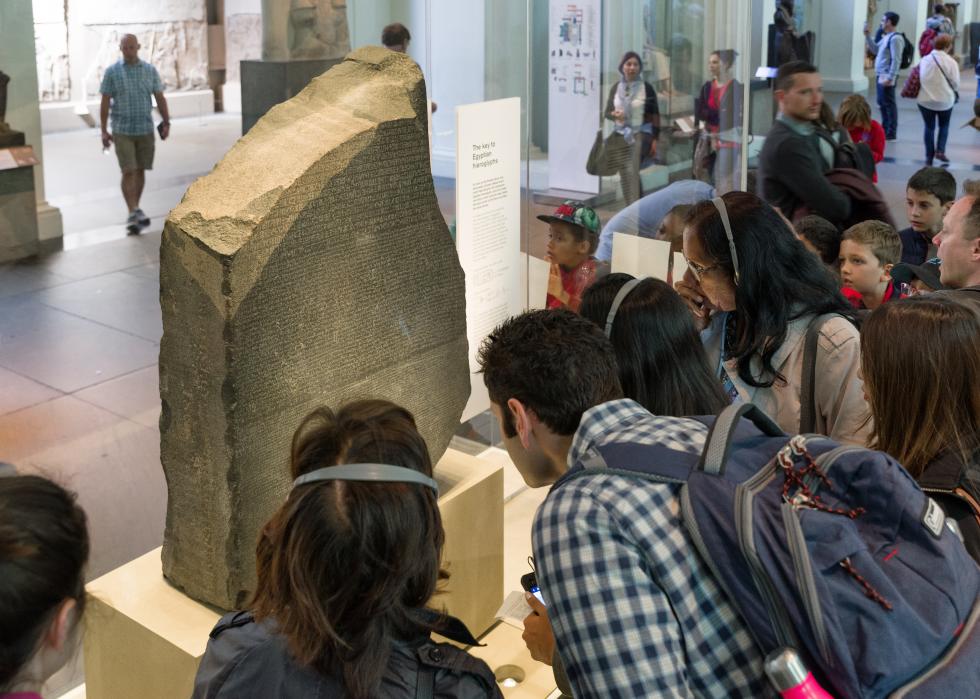
7 / 50
Jaroslav Moravcik // Shutterstock
Rosetta Stone
Soldiers in Napoleon Bonaparte's army accidentally discovered the remarkable Rosetta Stone while working on a fort in the Nile Delta, co-ordinate to the British Museum. The artifact, which dates back to 196 B.C., is inscribed with "a royal decree issued by priests on behalf of Ptolemy Five, then ruler of the Ptolemaic Empire in Egypt," in three distinct scripts: Egyptian demotic script and hieroglyphs, along with ancient Greek. The message was deciphered past Egyptologist Jean-François Champollion in 1822, which allowed other ancient texts to be translated.
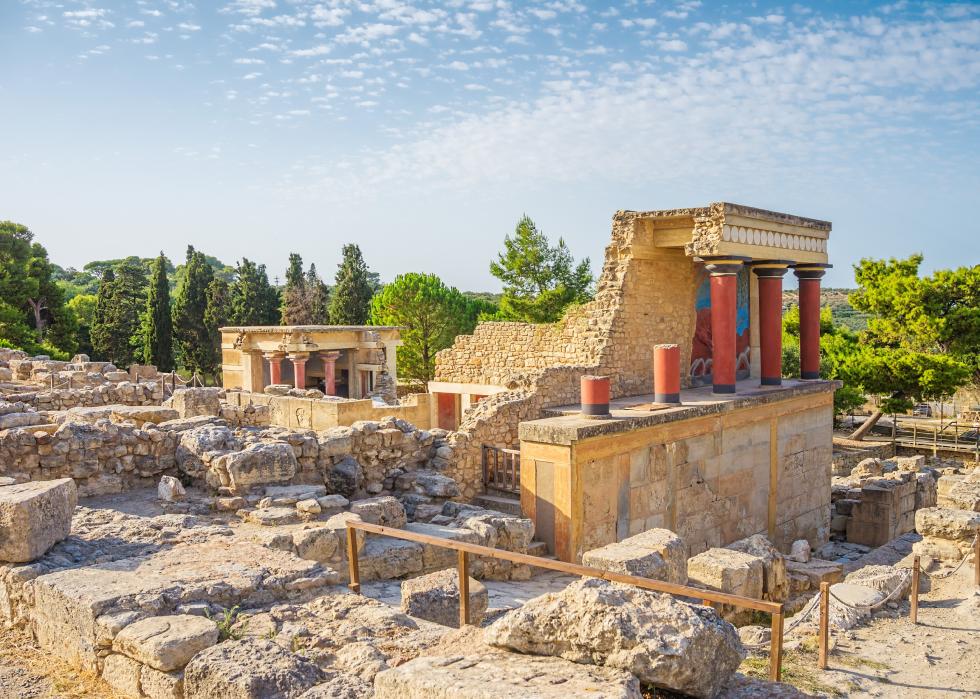
viii / 50
tuulijumala // Shutterstock
Knossos
Dubbed Europe's oldest city, Knossos is an archeological site on Crete that dates back to the Bronze Age. It was discovered past amateur archeologist Minos Kalokairinos in 1878. The palace circuitous contains around ane,300 intricately decorated rooms, forth with baked clay slabs with inscriptions in an unknown language.
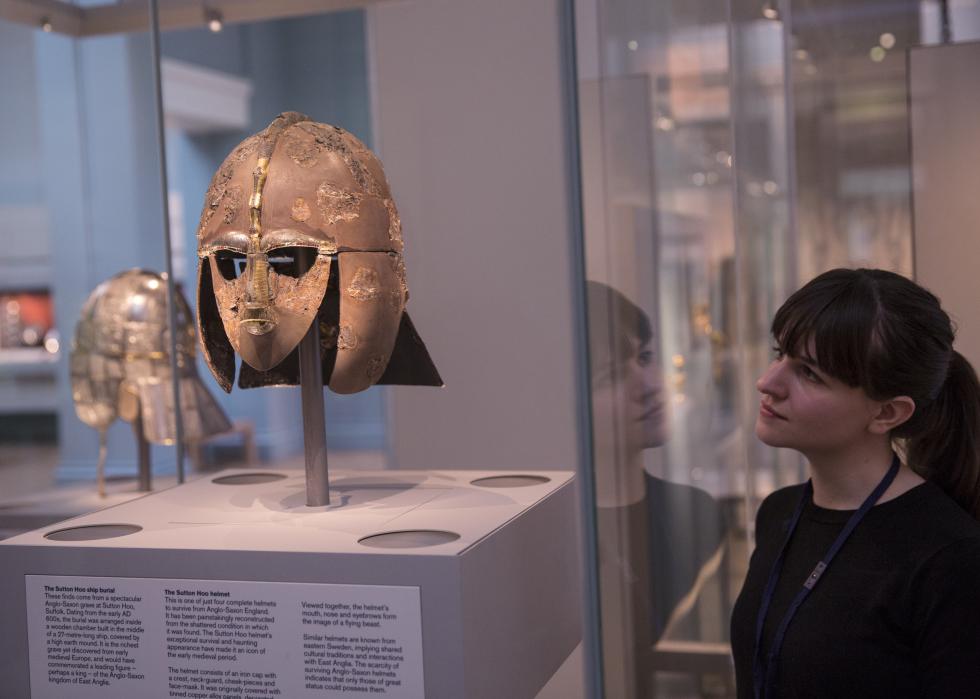
9 / fifty
Oli Scarff // Getty Images
Sutton Hoo
Archeologists got a vivid glimpse at the medieval world when the excavation of Sutton Hoo, in Suffolk, England, began in 1939. The largely in-tact ship burial held Anglo-Saxon grave goods, including Byzantine artifacts, weaponry, and a now-famous helmet.
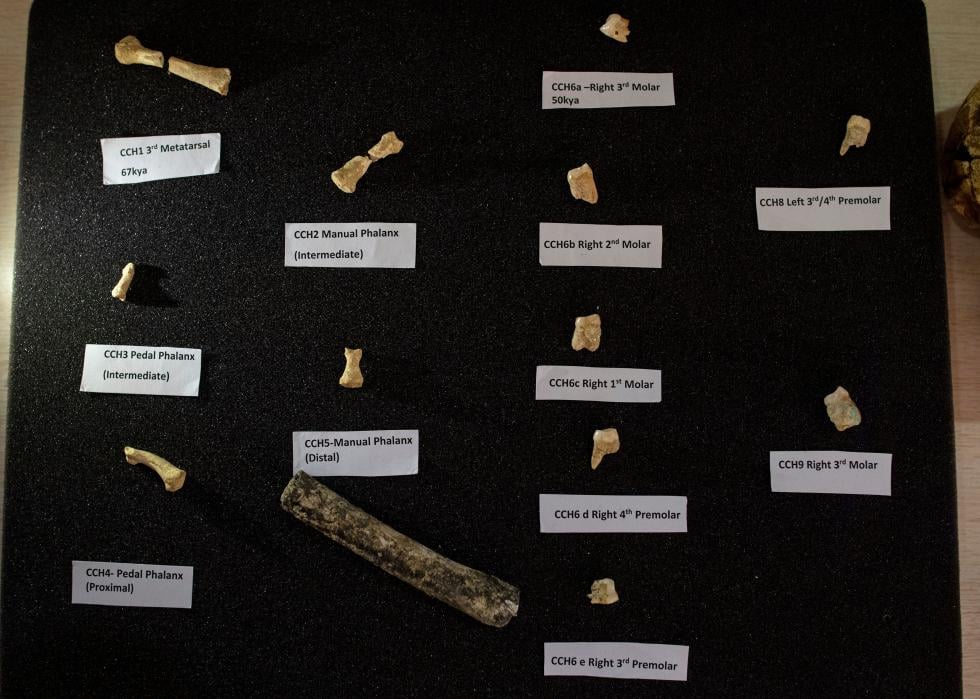
x / l
NOEL CELIS // Getty Images
Human luzonensis
In 2019, researchers in the Philippines discovered bear witness of an ancient human being species that scientists were previously unaware of. Dubbed Homo luzonensis, the small hominin is believed to have lived on Luzon isle between 50,000 and 67,000 years ago, National Geographic reported. It was identified after archeologists found seven teeth and half a dozen pocket-size bones.
You may also like: 50 endangered species that only live in the Amazon rainforest
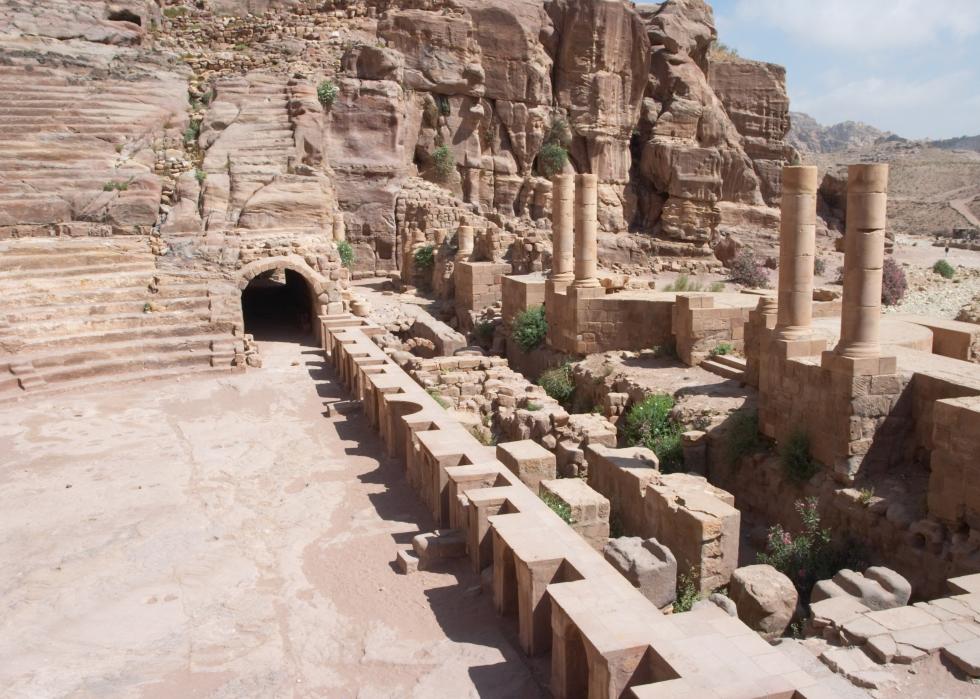
11 / 50
Petra
The "lost city" of Petra had been referenced in historical documents for quite some time, just it wasn't until 1812 that the site had finally been constitute by Swiss explorer Jean-Louis Burckhardt. The impeccably intact Nabataean Aramaic archeological site, which was first inhabited in 7000 B.C., showcases what life was like in a trading metropolis focused on wealth.
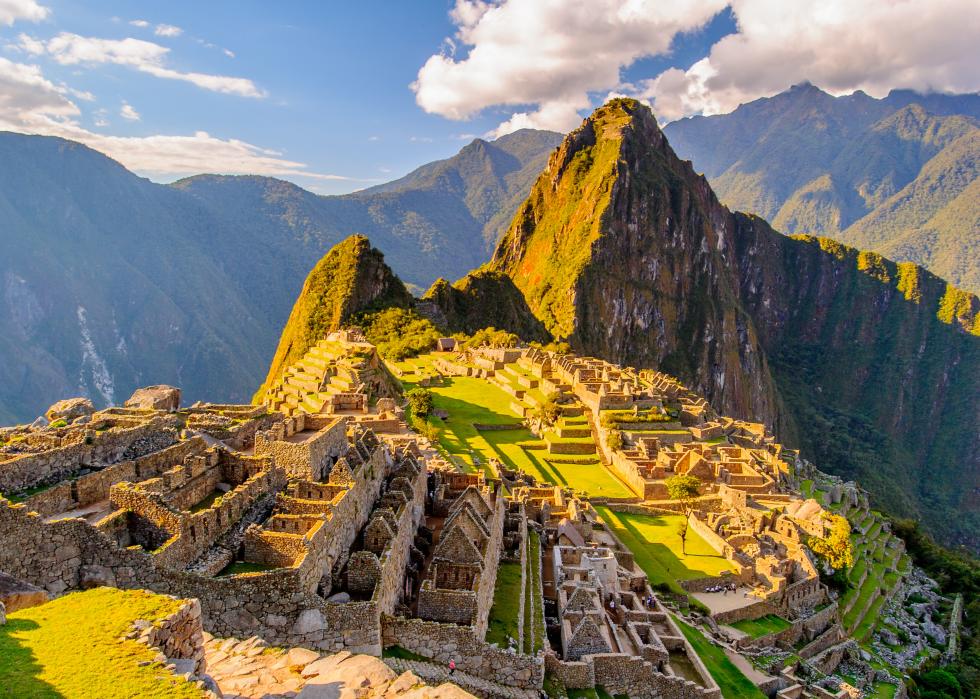
12 / 50
Anton_Ivanov // Shutterstock
Machu Picchu
Explorer Hiram Bingham rediscovered the "lost" Inca citadel of Machu Picchu in Republic of peru in 1911. The well-preserved archeological site, which was synthetic in the mid-1400s, gives historians a sense of the technological capabilities held by the Inca Empire when information technology was at its most powerful. The cave cemeteries and terraced platforms also offering a glimpse at how everyday people lived in this area.
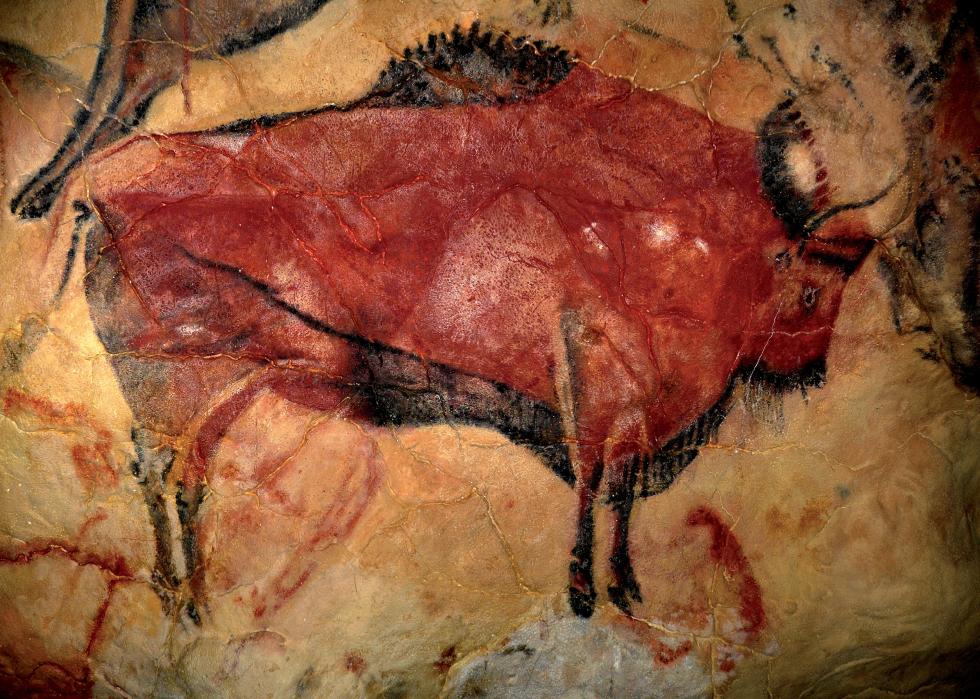
thirteen / 50
Heritage Images // Getty Images
Cavern of Altamira
The Cave of Altamira, a Paleolithic cave in Northern Spain, contains particularly well-preserved polychrome paintings and charcoal drawings of human being hands and animals. The amazing archeological site was plant by Modesto Cubillas in 1868. UNESCO said the artwork showcases "outstanding illustrations of a significant stage in human being history."
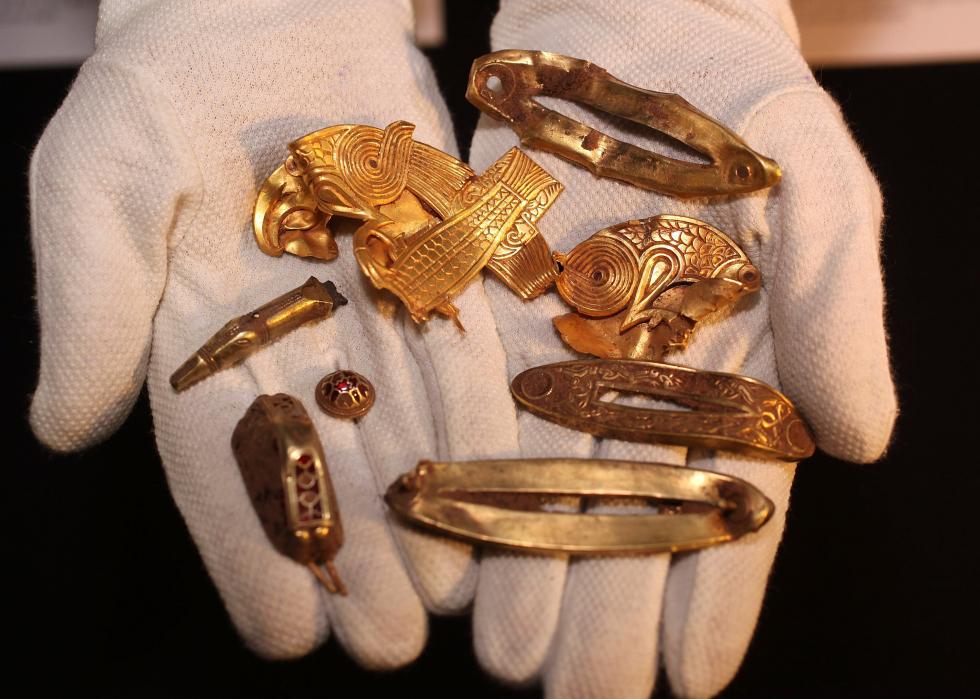
14 / l
Christopher Furlong // Getty Images
Staffordshire Hoard
A man named Terry Herbert was using a metal detector over farmland in Staffordshire, England, in 2009 when he stumbled beyond a substantial archeological finding: gilded artifacts. He reported the treasure to the Portable Antiquities Scheme, which scheduled a weeks-long archeological dig. They uncovered thousands of other items—the "largest collection of Anglo-Saxon gilded and silver treasure ever constitute"—earning the booty the name Staffordshire Hoard.
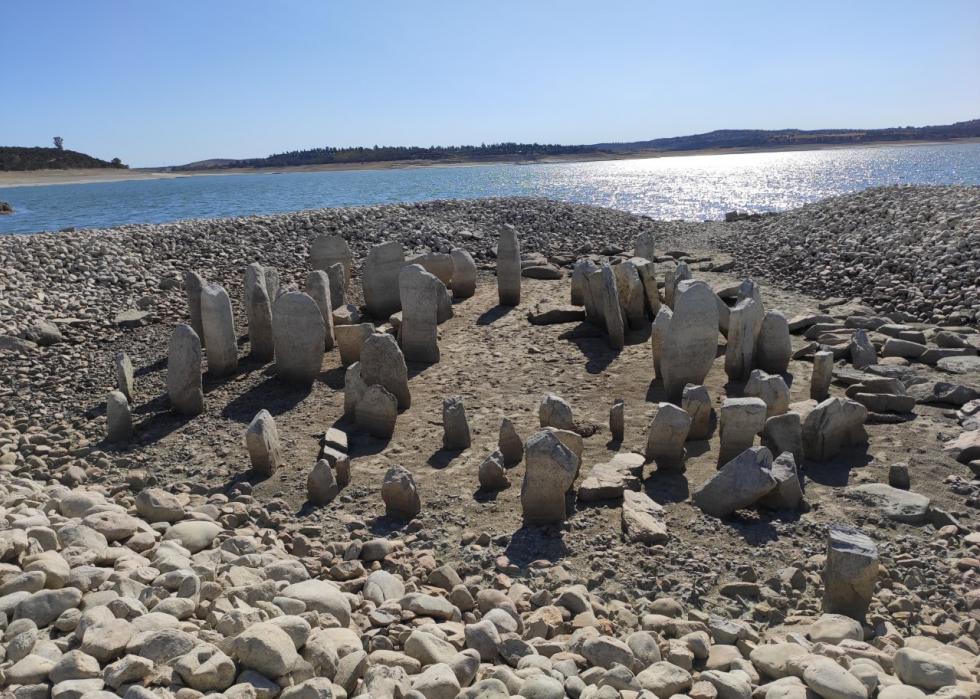
15 / 50
Pleonr // Wikimedia Eatables
Spanish Stonehenge
A drought in Spain's Extremadura region allowed archeologists to finally see the long-submerged Dolmen de Guadalperal, in 2019. Besides known equally Spanish Stonehenge, the 7,000-year-onetime site contains 100 monolithic stones, some of which are 6 anxiety tall. Locals believe it may take been a trading hub with a religious chemical element.
You may also similar: A timeline of WWII, one of the most devastating conflicts in world history
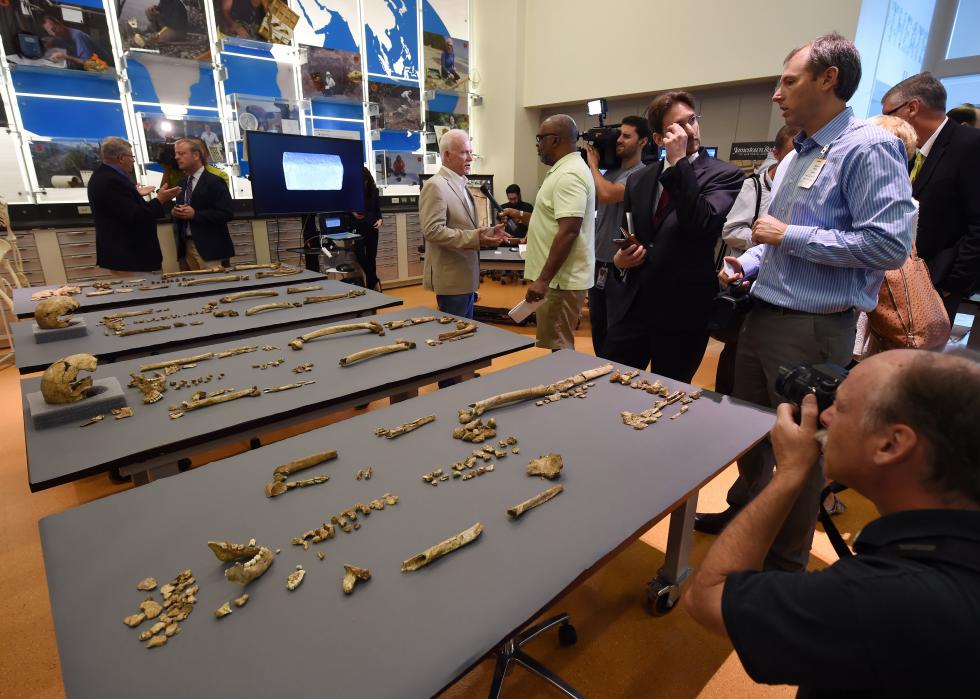
16 / fifty
The Washington Post // Getty Images
The Lost Leaders of Jamestown
In 2015, a team of researchers identified iv skeletons constitute in the celebrated 1608 church of Jamestown (where John Rolfe and Pocahontas were wed) equally the remains of the "founders of the first permanent British settlement in America," National Geographic reported. The forensic researchers used the teeth of the skeletons to figure out how long the "Lost Leaders of Jamestown" spent at the settlement.
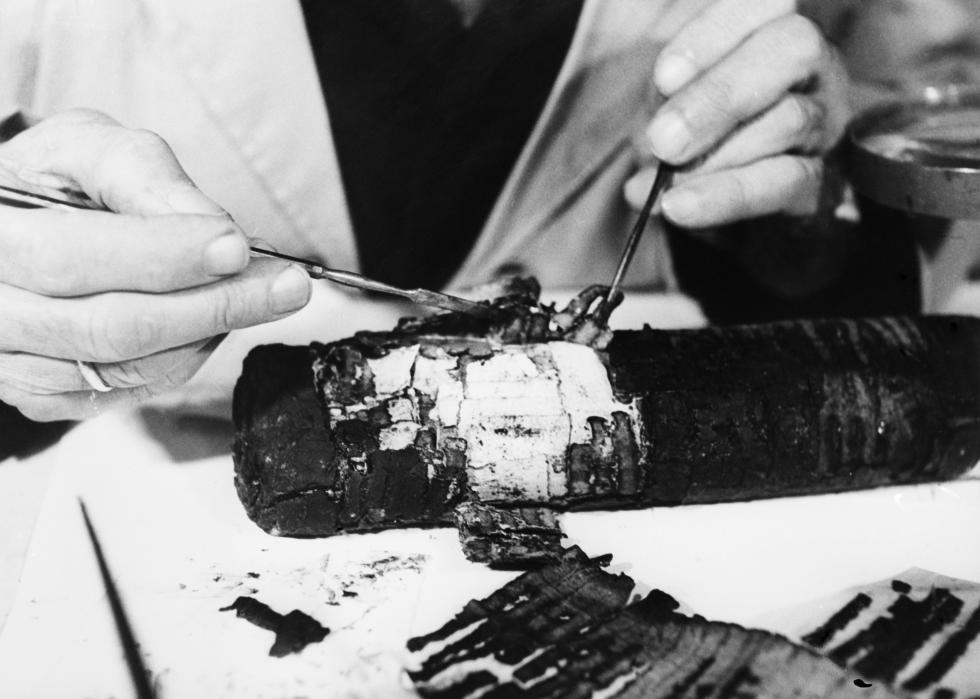
17 / 50
Dead Sea Scrolls
While disposed to his flock in 1947, a immature Bedouin shepherd in the Judean Desert made one of the greatest archeological discoveries ever: the Expressionless Body of water Scrolls. Held in large clay jars, the onetime scrolls contained Hebrew manuscripts written more than 1,000 years before than whatsoever existing Biblical text, according to the Israel Antiquities Authority.
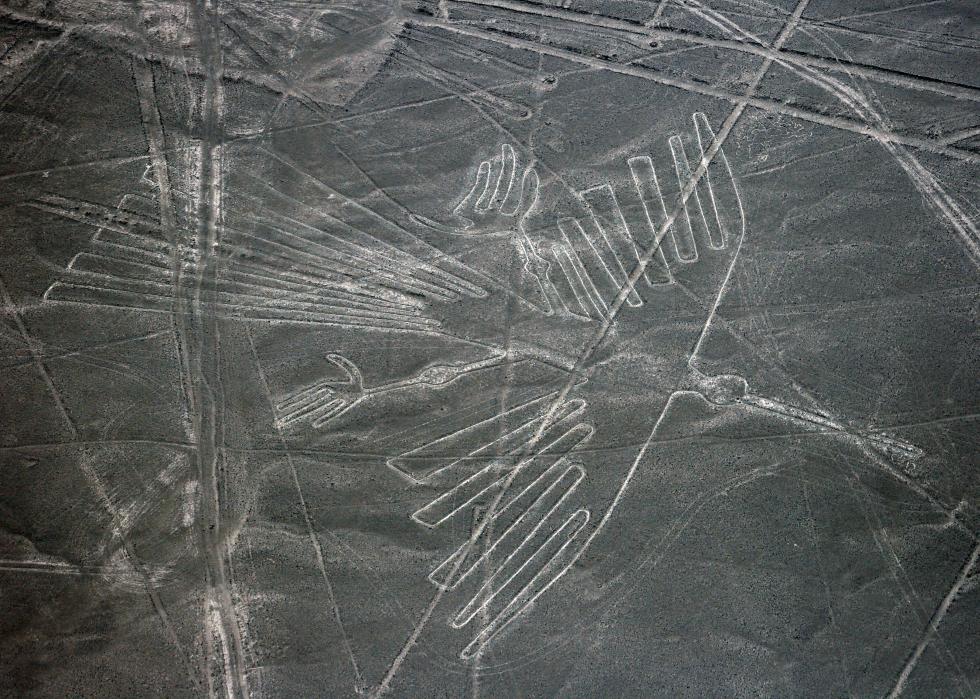
xviii / fifty
Nazca Lines
Wing to a higher place Peru's Nazca Desert, and y'all'll encounter huge geoglyphs that resemble animals and plants. Dubbed the Nazca Lines, the archeological finding dates back to between 1,500 and ii,500 years sometime. American historian Paul Kosok is credited as the first researcher to conduct an in-depth study of the Nazca Lines, the purpose of which is nevertheless a mystery.
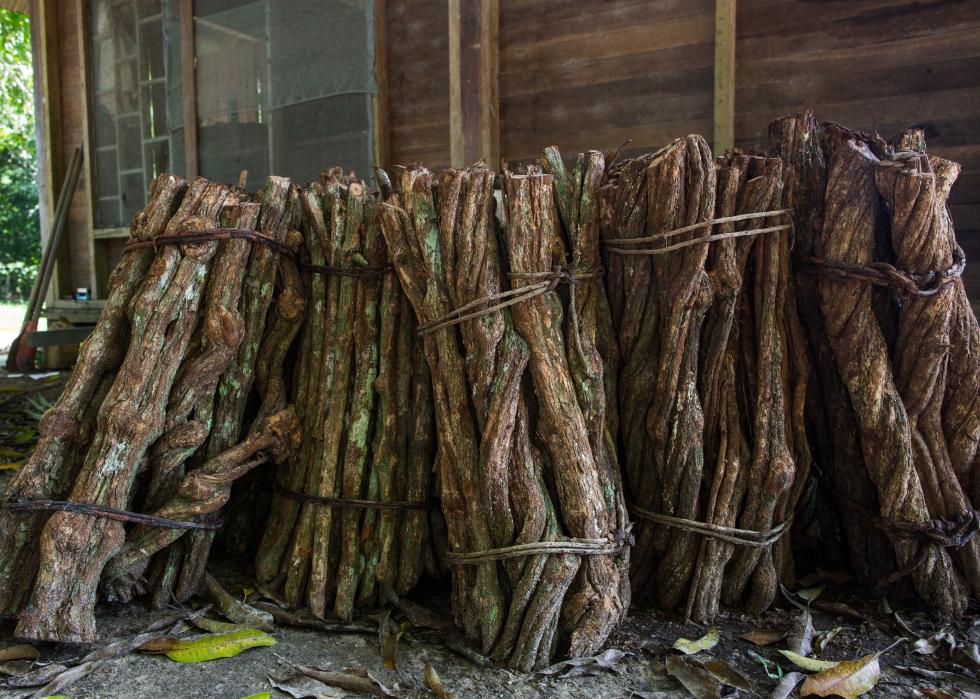
19 / 50
onapalmtree // Shutterstock
Ayahuasca from the Bolivian Andes
In 2019, researchers discovered that a millennium-old leather package found in a cavern in the Andes of Bolivia contained the active compounds for ayahuasca, a hallucinogenic tea, the University of California Berkeley reported. The artifact is the commencement evidence that South Americans have been using hallucinogenic substances for at least 1,000 years.
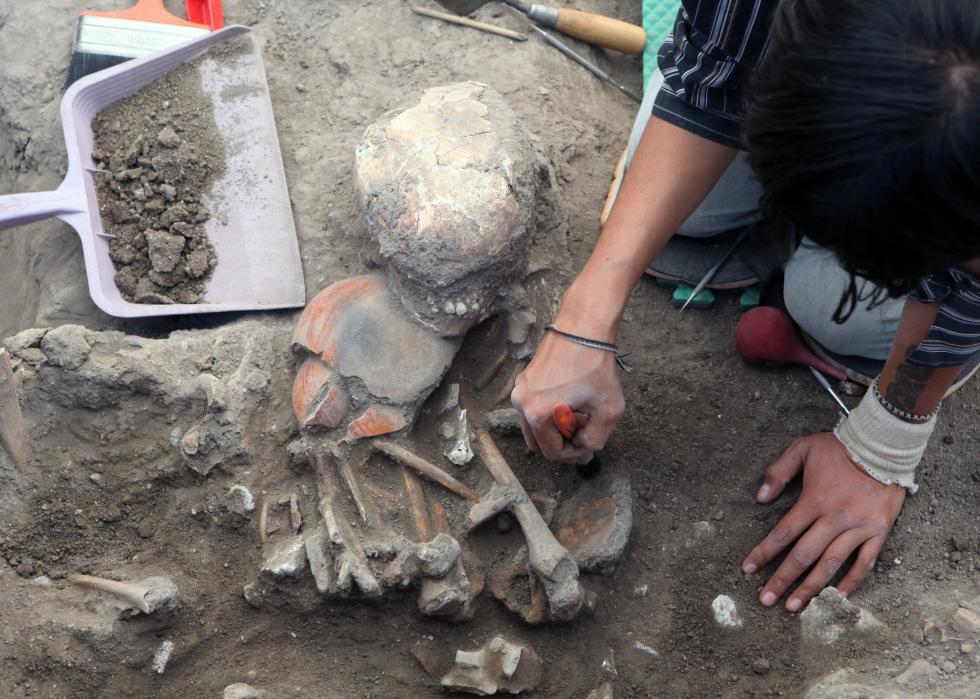
20 / 50
Pre-Hispanic skeleton
As they were building a h2o tank foundation in 2020, people in Tamaulipas, United mexican states, found one of the first complete skeletons of a pre-Hispanic man. Researchers believe the remains, which had been untouched for more than than a millennium, belonged to a man who was between 21 and 35 years old at the fourth dimension of death.
You may also like: How Americans experience about 25 major issues
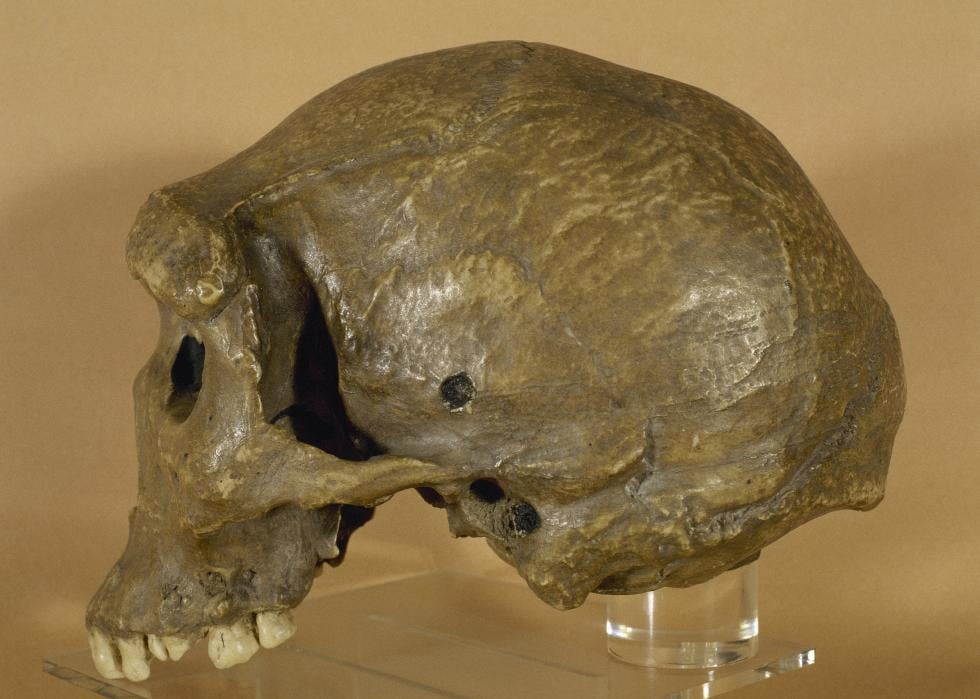
21 / 50
299,000-year-old skull
In 2020, a research team from Australia's Griffith University and London's Natural History Museum took a closer look at a skull discovered in modern-day Zambia about 100 years earlier. They discovered that information technology was 299,000 years old, not 500,000 years old, as previously speculated. Still, the more than authentic dating suggests that multiple man species lived in the area at the same time, per Nature.
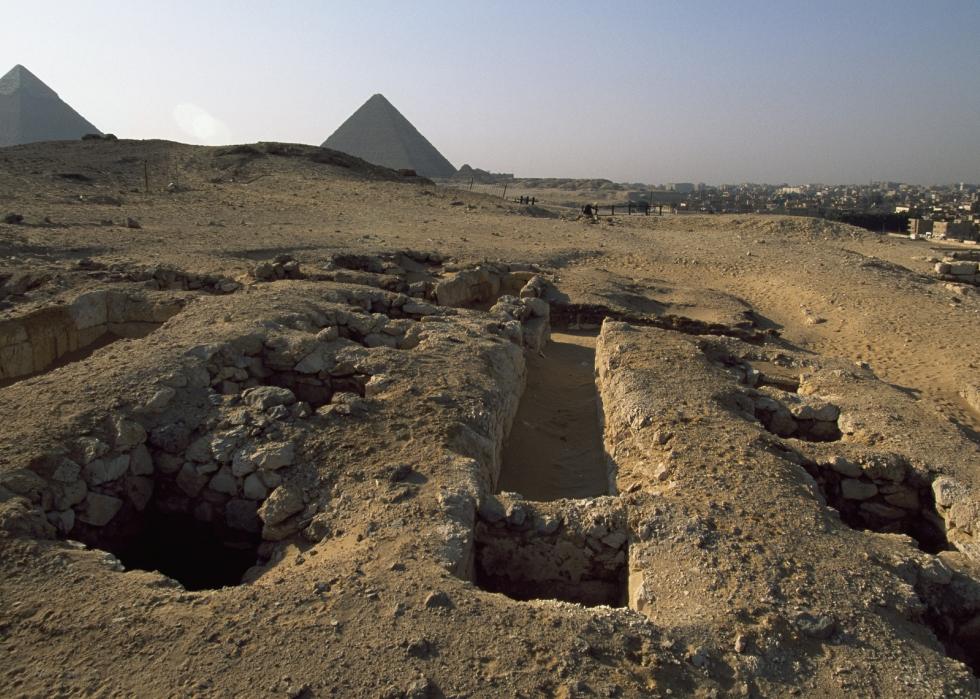
22 / 50
DEA / S. VANNINI // Getty Images
Tombs of pyramid builders in Egypt
Information technology's been long speculated that the Swell Pyramids of Giza were built by slaves. Notwithstanding, a 2010 discovery of aboriginal tombs, reported to be more than 4,000 years quondam, with skeletons of pyramid-builders indicates that they were paid laborers, according to The Guardian.
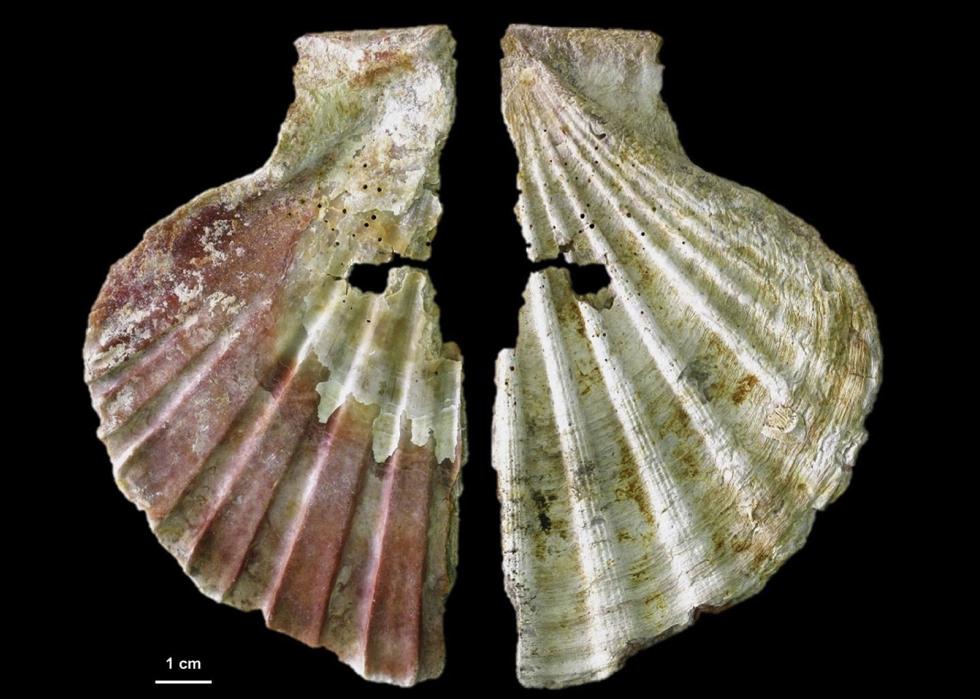
23 / 50
João Zilhão and colleagues // Wikimedia Commons
Painted beat out from Neanderthals
Researchers unearthed a painted fossil marine shell from a cave in Northern Italian republic that was nerveless by Neanderthals, according to a 2013 article in PLOS ONE. While Neanderthals are ofttimes thought of as primitive cavemen, the decorated artifact suggests that they may take collected artwork and thus been more sophisticated than in one case believed.
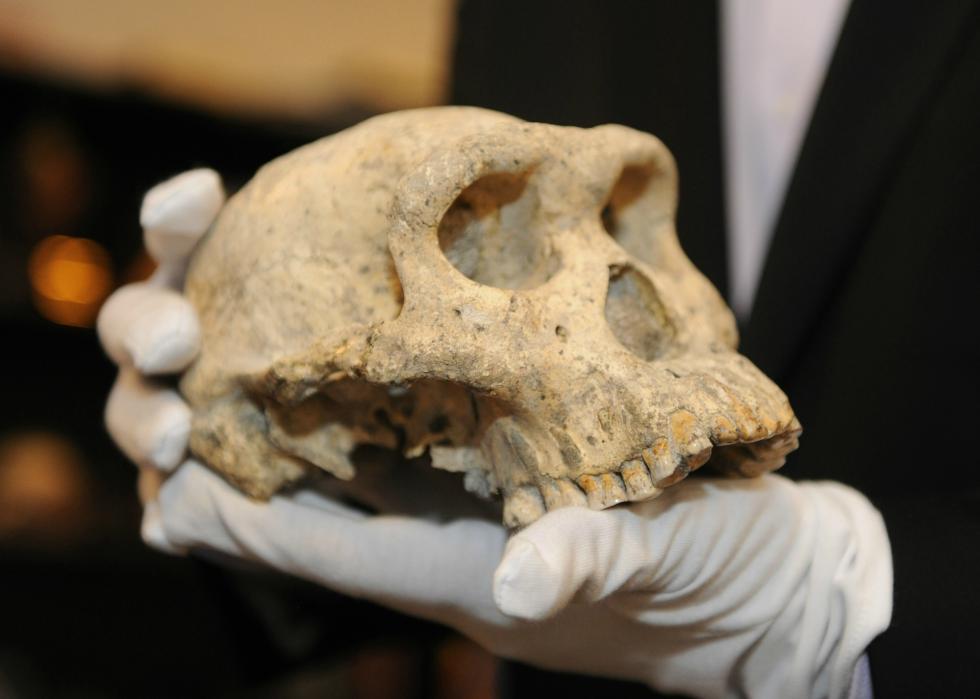
24 / fifty
VANO SHLAMOV // Getty Images
1.8-milion-yr-former skull
Starting in 2005, scientists spent viii years researching the features of a 1.8-million-twelvemonth-old skull unearthed in the country of Georgia. Their research suggests that the early Human being species (a predecessor to humans) may have had a much simpler evolution than previously thought, per The New York Times.
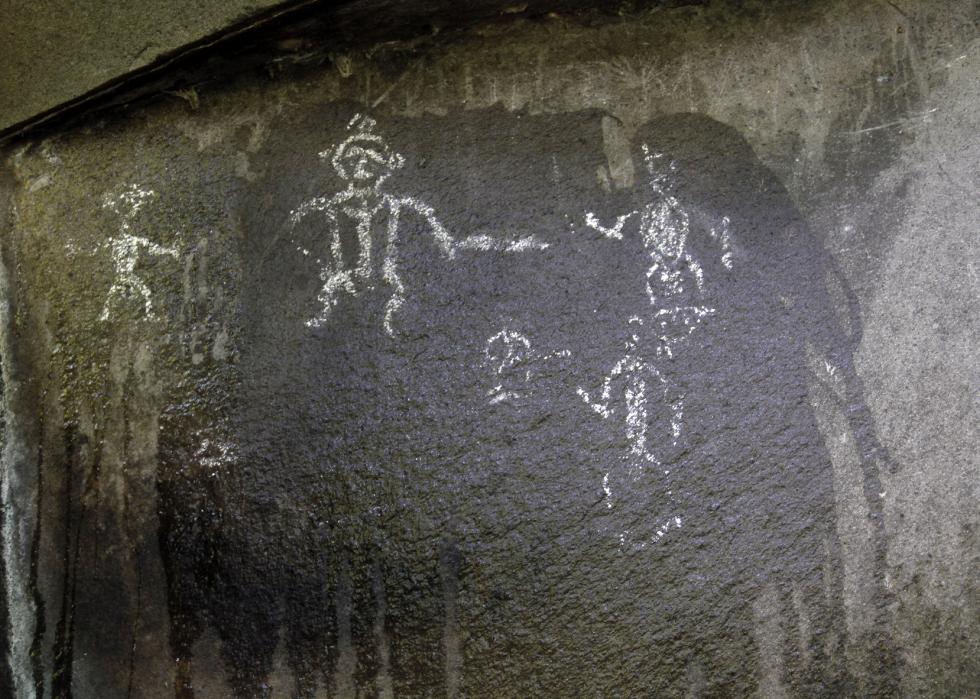
25 / l
Pacific Press // Getty Images
The earliest story told in pictures
A 2019 written report in Nature found that a panel of elaborate rock art from Sulawesi, Indonesia, is believed to be the earth's earliest figurative artwork and "oldest pictorial record of storytelling." The rare archeological finding depicts a hunting scene with dwarf bovids and wild pigs and is estimated to be nearly 44,000 years old.
You may too like: Worst-run cities in America
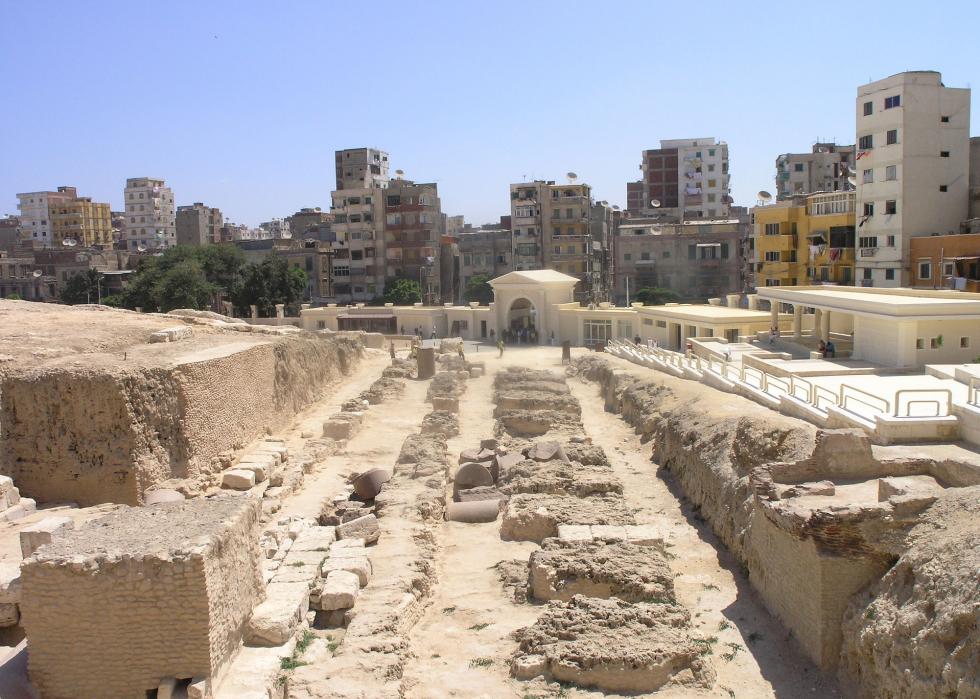
26 / 50
Daniel Mayer // Wikimedia Commons
Library of Alexandria
A squad of researchers from Poland and Egypt excavated what appeared to be the Library of Alexandria in 2004. The library contained "works by the greatest thinkers and writers of the ancient world," including Plato and Socrates. The digging was the first time that a complex of Greco-Roman lecture halls was found in the Mediterranean.
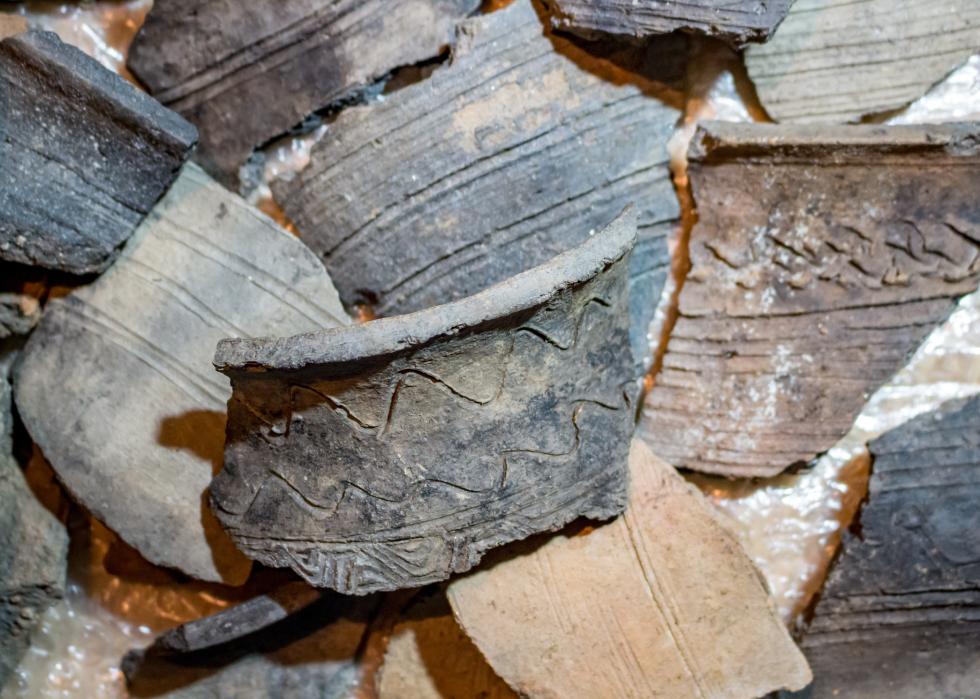
27 / 50
PhotoChur // Shutterstock
Hidden Japanese settlement in British Columbia
Archæology professor Robert Muckle heard almost a site tucked deep in the forest of the Northward Shore Mountains of British Columbia in 2004. While he thought it might be a historic logging military camp, he spent the next xiv years excavating the expanse and finding signs of a long-lost Japanese settlement, Smithsonian Mag reported. Researchers take since dug up more than than i,000 artifacts, as well as bear witness of a Japanese bathhouse at the site.

28 / 50
Marker and Colleen Hayward // Getty Images
Recording of long-lost Beatles performance
Not all archeological finds are thousands of years old. Case in indicate: the discovery of a recording of a performance of "Paperback Writer" past the Beatles on "Acme of the Pops" in 1966. The BBC didn't tape the show at the time, and fans had long believed that information technology was lost, co-ordinate to Smithsonian Magazine. However, fan David Chandler captured the performance with a personal camera and stored the recording in his attic for decades, just to rediscover information technology again in 2019.
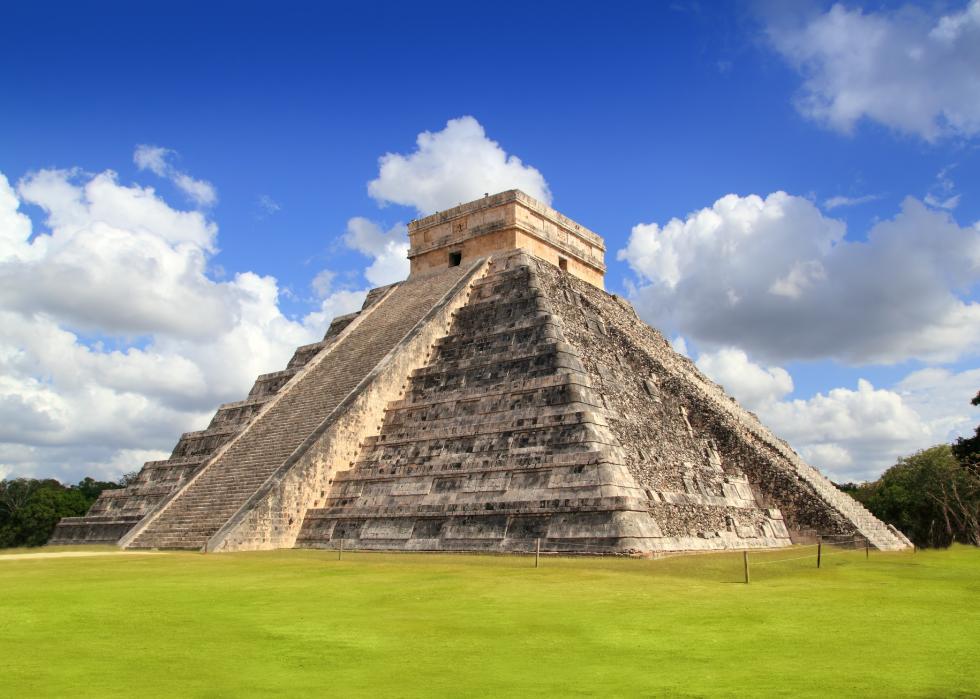
29 / 50
lunamarina // Shutterstock
Chichén Itzá
Chichén Itzá, a massive pre-Columbian city created by the Maya in Yucatán State, Mexico, garnered worldwide attention afterward explorer John Lloyd Stephens wrote about information technology in 1843, but information technology wasn't until the early 20th century that archeologists from the Carnegie Establishment would begin conducting archeological research. The site is considered to exist among the mythical keen cities and offers researchers the gamble to study a myriad of architectural styles.
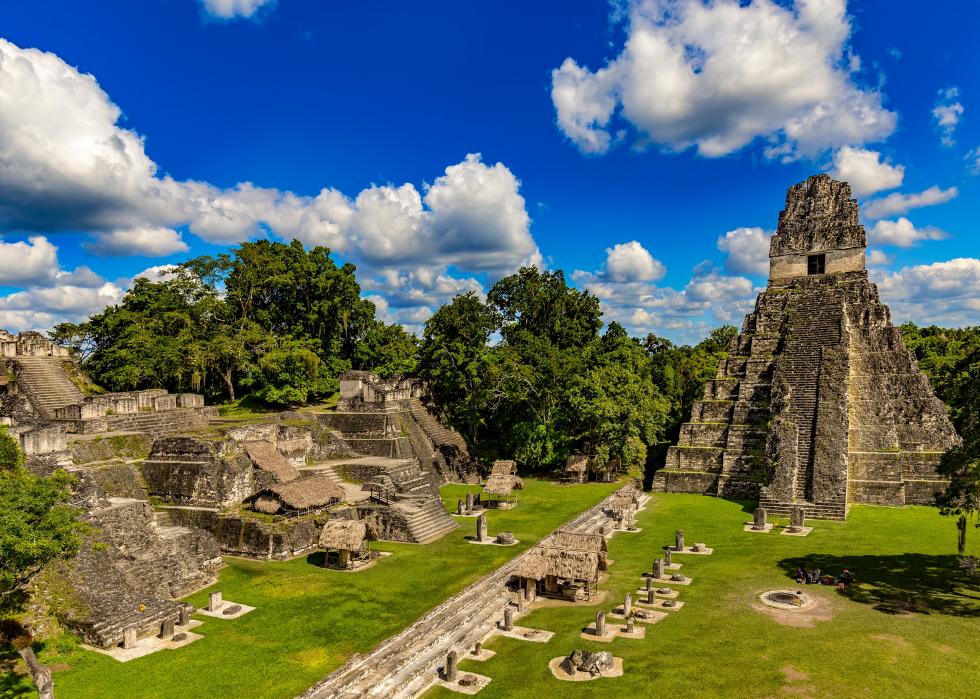
30 / fifty
Tikal
Excavations of Tikal, the ruins of an ancient pre-Columbian Maya metropolis in modern-day Guatemala, were started by the Academy of Pennsylvania in 1956. Since then, it has become one of the all-time sources of agreement of the lowland Maya cities and features a range of temples, monuments, and palaces.
You lot may also like: 25 terms you should know to understand the health care debate
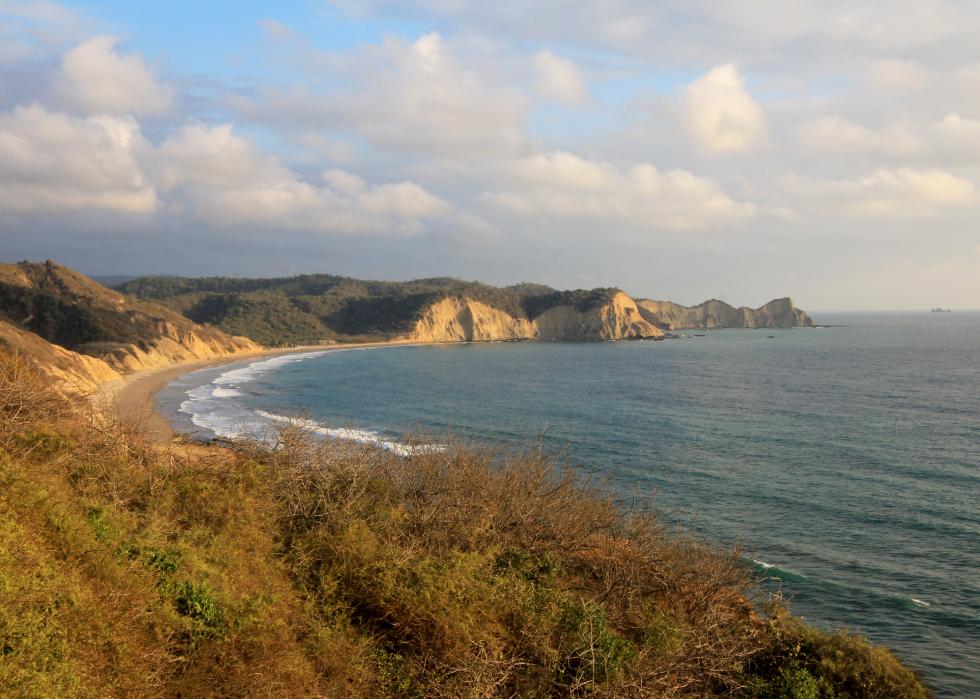
31 / 50
reisegraf.ch // Shutterstock
Helmets made from children's skulls
In 2019, archeologists working on an digging site in Salango, Ecuador, published their discovery of ii infants who were buried wearing helmets fabricated from the skulls of other children in Latin American Antiquity. The burial mounds are believed to have been created in the year 100 B.C. The findings offer clues near the unique infant mortuary rituals of the Guangala civilization.
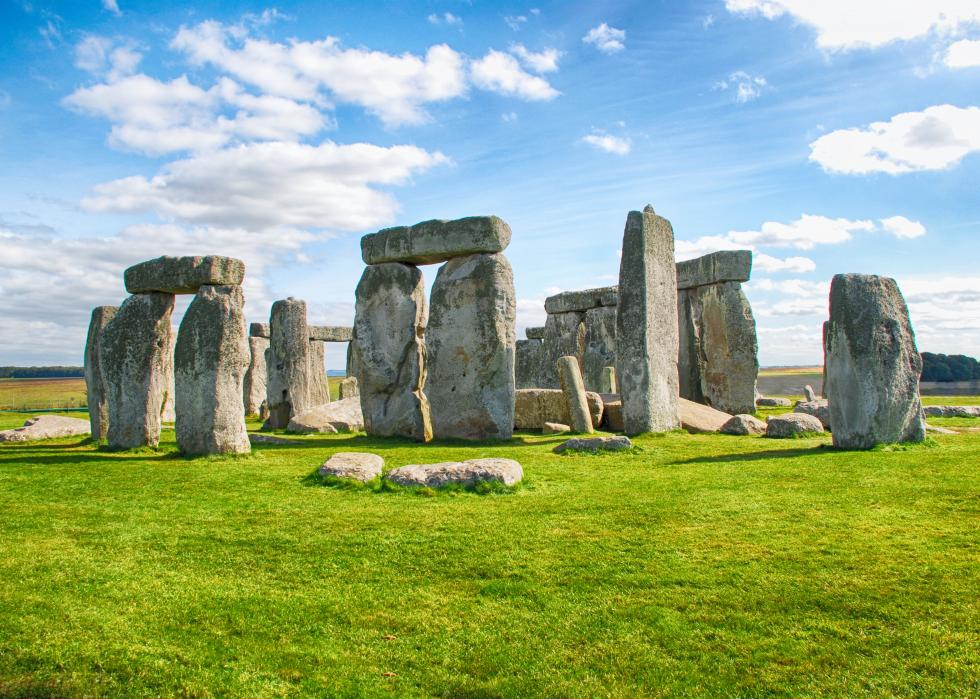
32 / 50
Stonehenge
The start recorded earthworks of Stonehenge, a prehistoric monument consisting of a band of 13-foot-high stones in Wiltshire, England, was started by the Knuckles of Buckingham in the 1620s. The monument, which dates back about 5,000 years, has helped researchers larn more about the ceremonial practices of the Neolithic and Bronze Ages.
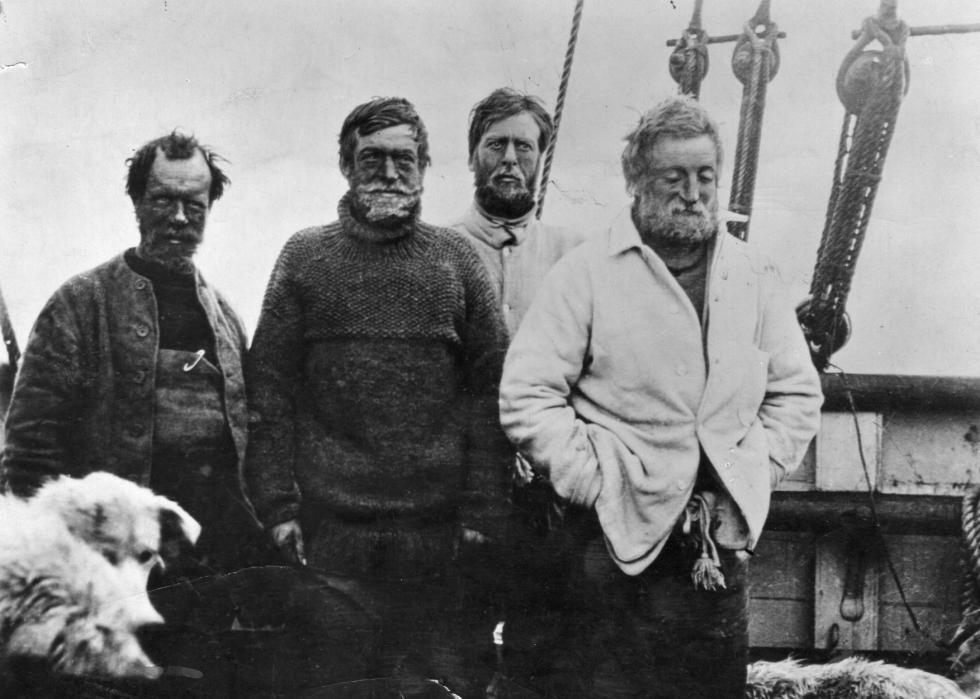
33 / 50
Spencer Arnold Drove // Getty Images
Sir Ernest Shackleton's whisky
Researchers retrieved whisky bottles that once belonged to explorer Ernest Shackleton that were tucked beneath his hut in the water ice of Antarctica in 2010. The bottles were abased when Shackleton ended his expedition to reach the Southward Pole nearly 100 years earlier. At the time of the discovery, Whyte & Mackay's, which now owns that brand of whisky Shackleton drank, planned to extract small-scale samples of the alcohol to run across if they could recreate the recipe.
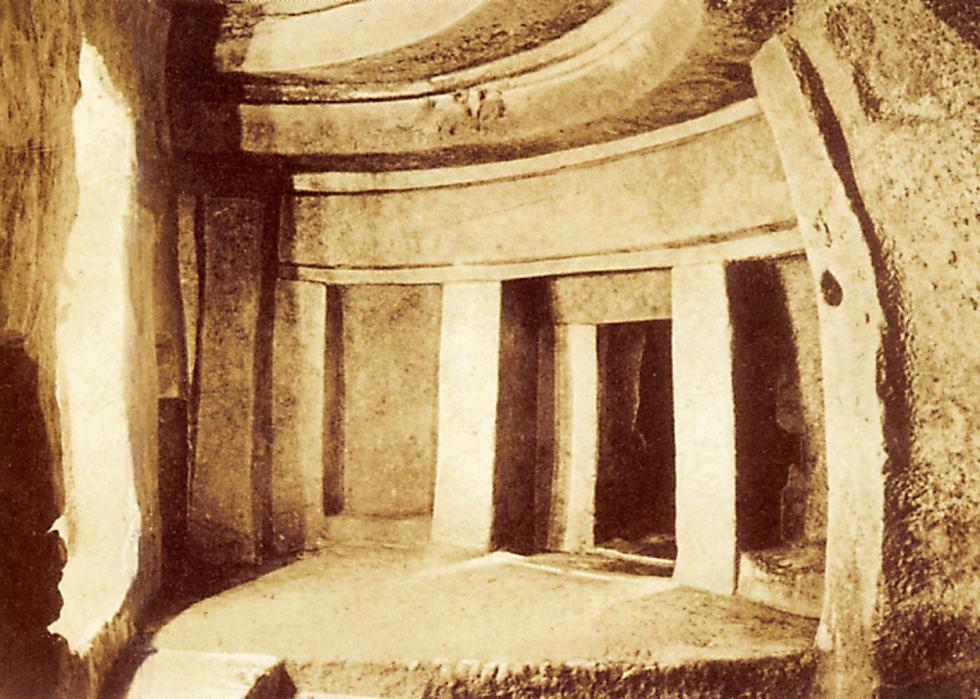
34 / 50
Richard Ellis // Wikimedia Eatables
Ħal Saflieni Hypogeum
Construction workers accidentally discovered a Neolithic subterranean structure in Paola, Republic of malta, when they were cutting cisterns in 1902. Now known as the Ħal Saflieni Hypogeum, the finding contained grave goods, human being remains, and a multilevel construction with interconnected chambers. It has given researchers more insight into the Maltese culture of building temples.
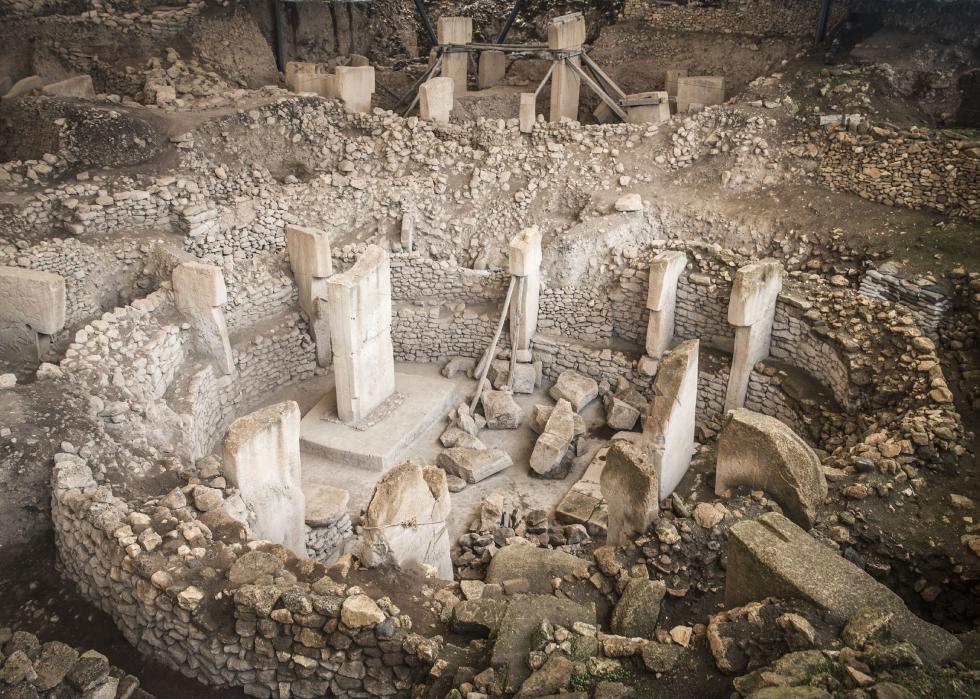
35 / 50
Anadolu Agency // Getty Images
Göbekli Tepe
Göbekli Tepe in Turkey contains the oldest-known megaliths in the world. The ancient site, thought to be of ritual or social importance between the 10th and 8th millennium B.C.E., features more than 200 pillars. The archeological site was first surveyed in 1963 by a research team from Istanbul University and the University of Chicago.
You may besides like: How top Autonomous candidates compare on major problems
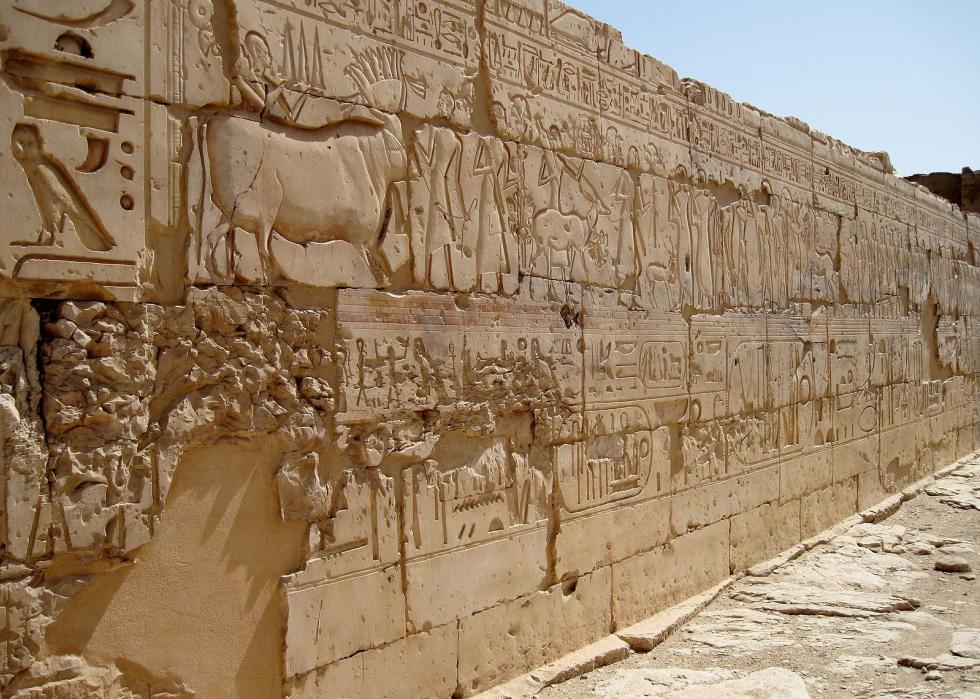
36 / 50
Olaf Tausch // Wikimedia Commons
Hidden Palace of Ramesses Ii
While researching a royal temple, archeologists from New York found an aboriginal Egyptian palace that's continued to the Temple of Ramses 2 in Abydos, reported Newsweek in 2019. The discovery gives researchers more clues about temples of the catamenia and even prompted the showtime change to the temple's floor program in around 160 years.
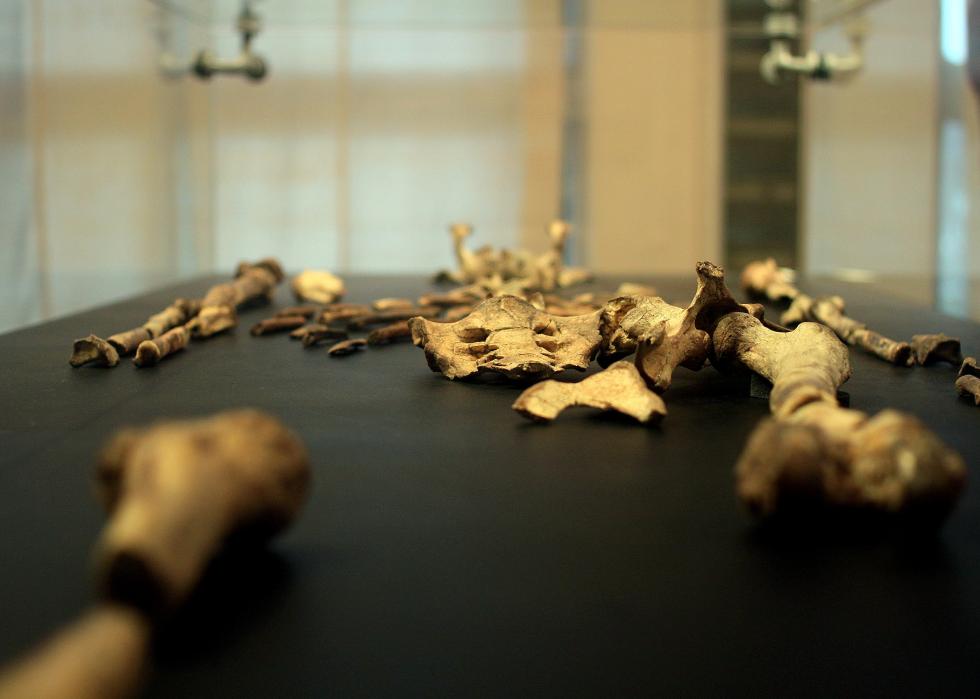
37 / 50
Lucy, the first Australopithecus afarensis skeleton
Paleontologist Donald C. Johanson discovered the first Australopithecus afarensis skeleton ever unearthed in Hadar, Federal democratic republic of ethiopia, in 1974. "Lucy," as the 3.2-meg-year-former ape has come up to be chosen, was idea to exist the earliest-known ancestor species to humans for the next 20 years, according to National Geographic.
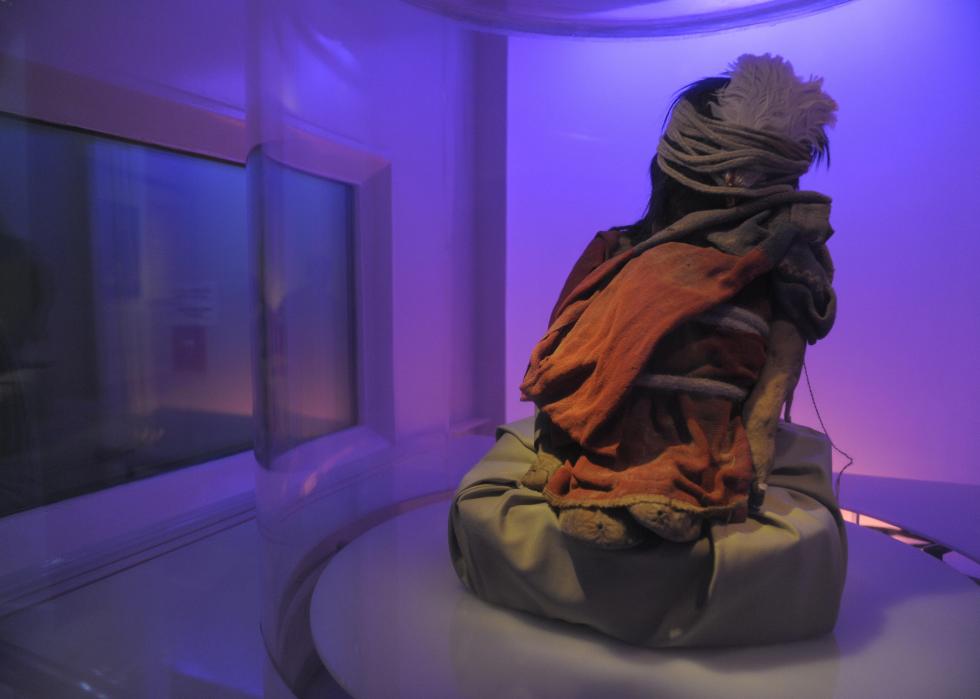
38 / fifty
JUAN MABROMATA // Getty Images
Frozen bodies of children sacrificed past Inca
Researchers learned more about Inca child sacrifice from the frozen bodies of two boys (age 4–v years old) and a 13-year-sometime girl, found in a tomb virtually Volcán Llullaillaco, Argentina, according to a 2013 paper published by the Proceedings of the National University of Sciences. Data extracted from the scalp hair of the remains implies that the children ingested coca and booze, and may accept been overall treated differently than other children before they were sacrificed.

39 / 50
Print Collector // Getty Images
Medieval female scribe
In 2019, a multidisciplinary enquiry team discovered "an abundance of ultramarine particles" in the dental remains of a woman who was laid to remainder at a German monastery in the 11th or 12th century, according to Archaeology magazine. Considering the brilliant blue pigment was extremely expensive and rare at the fourth dimension, researchers believe that the woman served as a scribe who used ultramarine when creating sacred manuscripts. It may somewhen lead to the discovery of more female scribes from the early on medieval period.
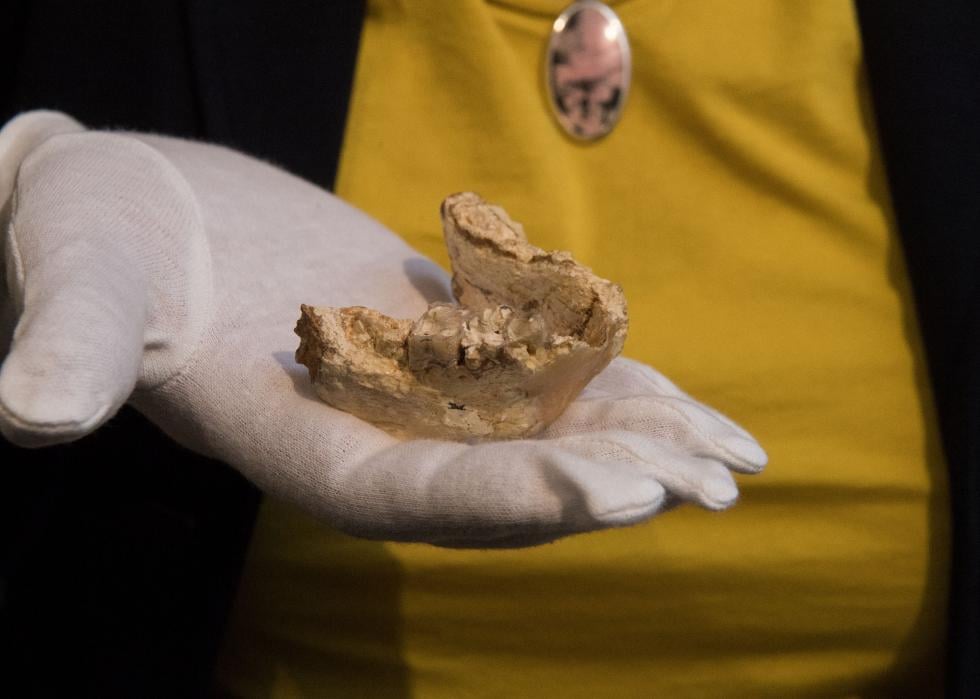
40 / l
film alliance // Getty Images
Ancient human jawbone outside of Africa
A fossil found on Israel's Mountain Carmel by a university freshman in 2002 would later exist determined to be the oldest man jawbone unearthed outside of Africa nearly 2 decades later, per Artnet. It was evidence that humans traveled outside of Africa effectually 50,000 years sooner than what experts previously believed.
You may also like: Former jobs of the governor of every state
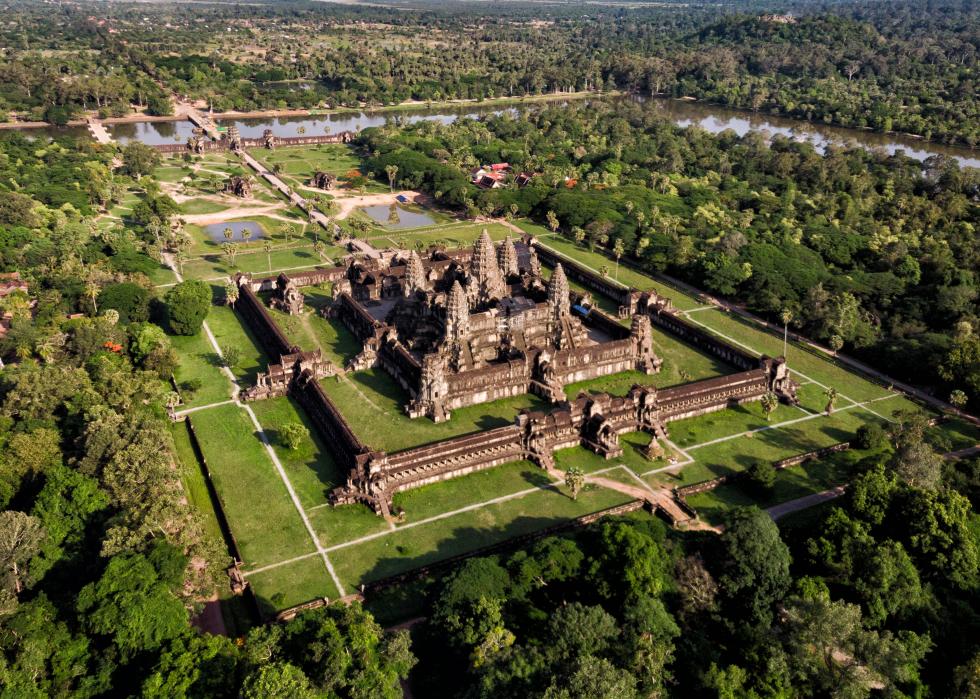
41 / 50
R.M. Nunes // Shutterstock
Angkor Wat
The writings of French naturalist Henri Mouhot in the mid-19th century prompted waves of archeologists to visit Kingdom of cambodia and acquire more about the once-sprawling metropolis of Angkor Wat, per the BBC. The massive Buddhist temple complex is considered to be ane of the world's largest religious monuments and is a source of Cambodian national pride.
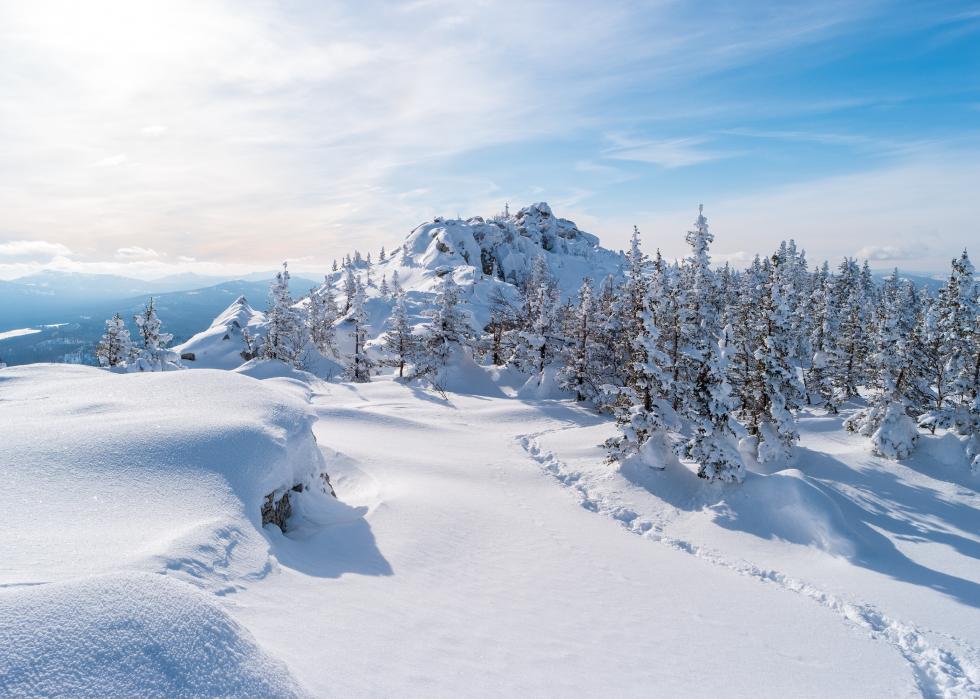
42 / 50
Stetiukha Kristina // Shutterstock
Frozen Siberian mummies
Archeologists constitute the remains of more than 40 people, including a slain warrior, in southern Siberia in 2003. The mummified bodies belonged to a class of warrior-nomads known as the Scythians. The findings have given researchers more details about the lives of ancient people in the region, including some of the earliest-known battleground surgeries, Detect magazine reported in 2008.
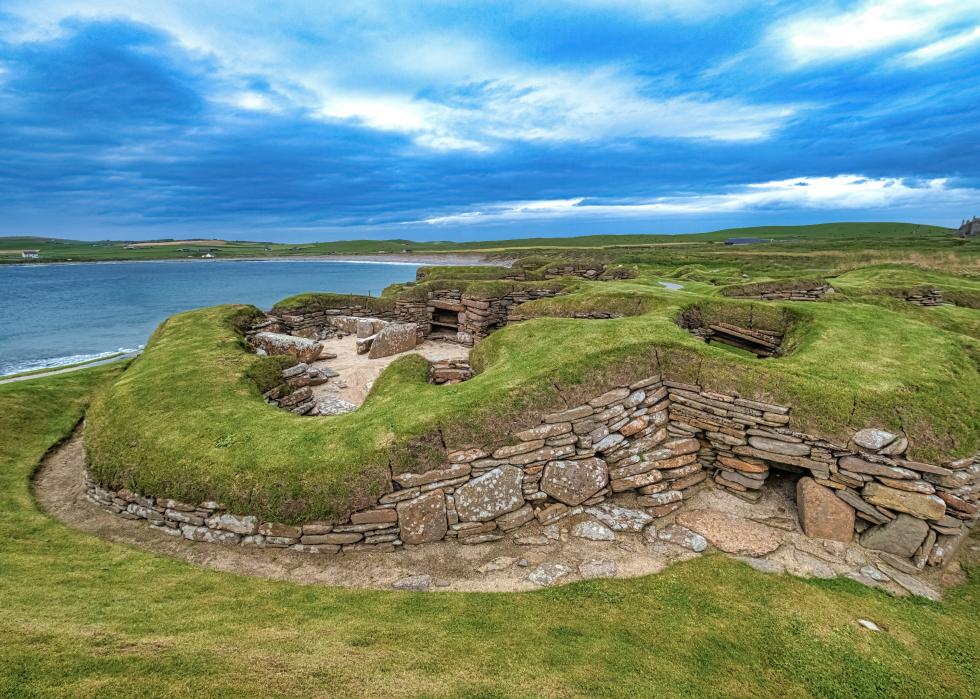
43 / 50
Skara Brae
A severe tempest in Scotland stripped the earth of a knoll and revealed the outline of the long-abandoned hamlet of Skara Brae in 1850. Some five,000 years onetime, Skara Brae is considered to be among the best-preserved Neolithic sites on the continent. Researchers are nonetheless trying to figure out why the residents abandoned the area, reported National Geographic in 2019.
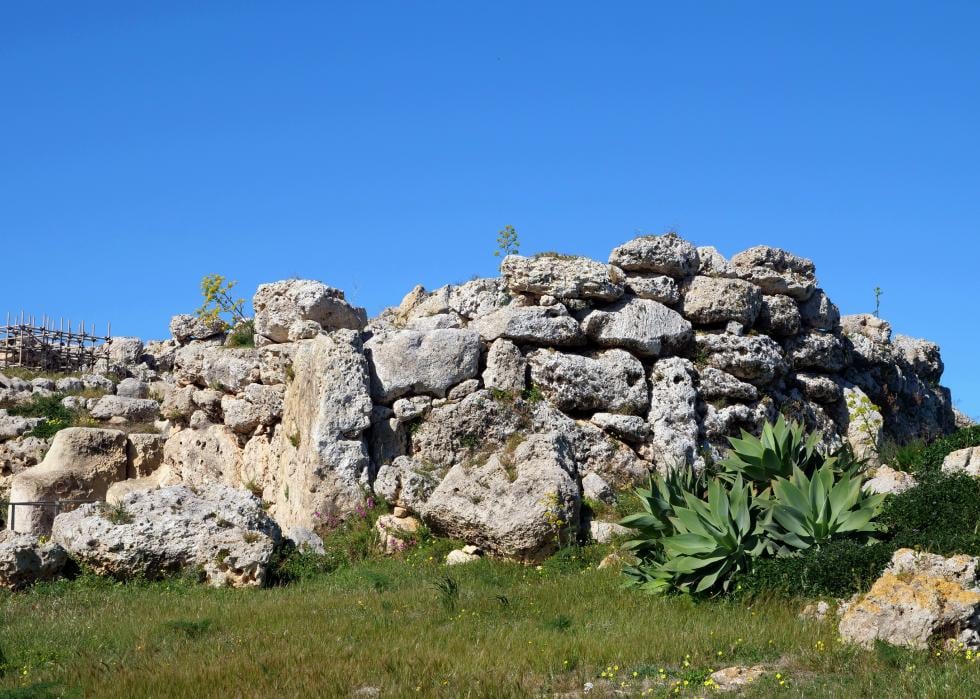
44 / 50
OksanaFedorchuk // Shutterstock
Ġgantija megalithic temple circuitous
While travelers and explorers had long known about the megalithic temple complex of Ġgantija in Malta, excavations didn't begin until 1827, with more all-encompassing digs occurring in the mid-20th century. Believed to take been erected equally early as 3600 B.C., the Ġgantija temples are ane of the oldest existing religious structures created past humans and accept since earned designation as a UNESCO Globe Heritage Site.

45 / fifty
The Acropolis of Athens
While Greece brims with fascinating archeological sites, none are quite as famous as the Acropolis of Athens. The site was synthetic over thousands of years, starting as early on equally the Bronze Age. Researchers began restoring and preserving the site effectually the turn of the 20th century. The Acropolis of Athens is at present considered to exist a universal symbol "of the classical spirit and civilization," notes UNESCO.
You may as well like: fifty ways the news industry has changed in the last 50 years
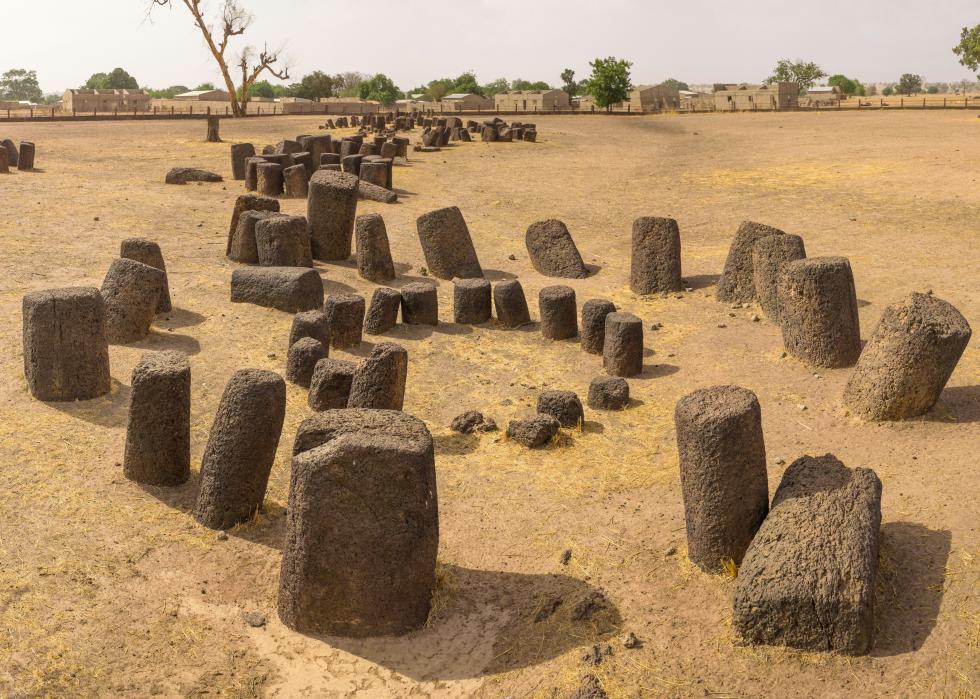
46 / 50
DorSteffen // Shutterstock
Senegambian rock circles
Congenital over a menstruation of 1,500 years, the Senegambian stone circles are part of a sacred mural spanning more than 11,500 foursquare miles in The Gambia and Senegal. Excavations on the megalithic circles occurred in 1964 and 1965. The concentration of the 1,000-plus monuments offers insight into a "prosperous, highly organized and lasting social club," UNESCO says.

47 / fifty
Wendy Stone // Getty Images
Lalibela churches
Among the most famous archeological findings in Federal democratic republic of ethiopia are the country's monolithic churches, believed to have been built as early on equally the seventh century. They are of significant religious importance for Ethiopian Orthodox Christians and feature an all-encompassing drainage arrangement and formalism passageways.
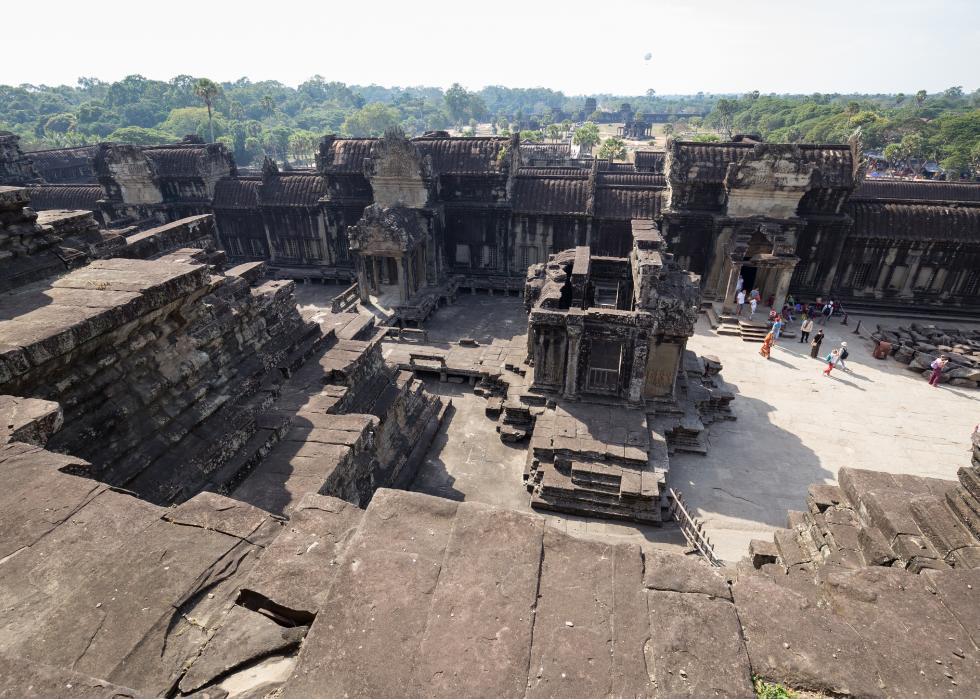
48 / l
Sunstopper1st // Shutterstock
Medieval cities in Cambodia
Laser-scanning applied science helped researchers uncover several medieval cities buried in the Cambodian jungle in 2015, The Guardian said. The never-before-seen cities are believed to have comprised "the world's largest empire in the 12th century."
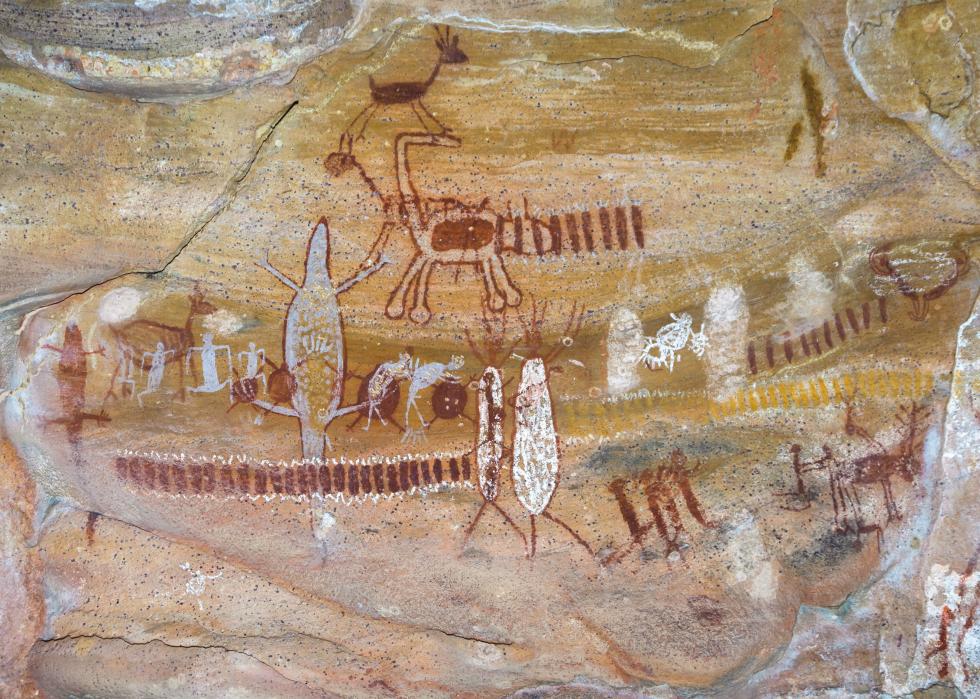
49 / l
Marcos Amend // Shutterstock
Serra da Capivara National Park
Scattered throughout the stone shelters of Brazil's Serra da Capivara National Park are cave paintings, some of which date back more than than 25,000 years. They were created past one of South America's oldest human communities, per UNESCO.
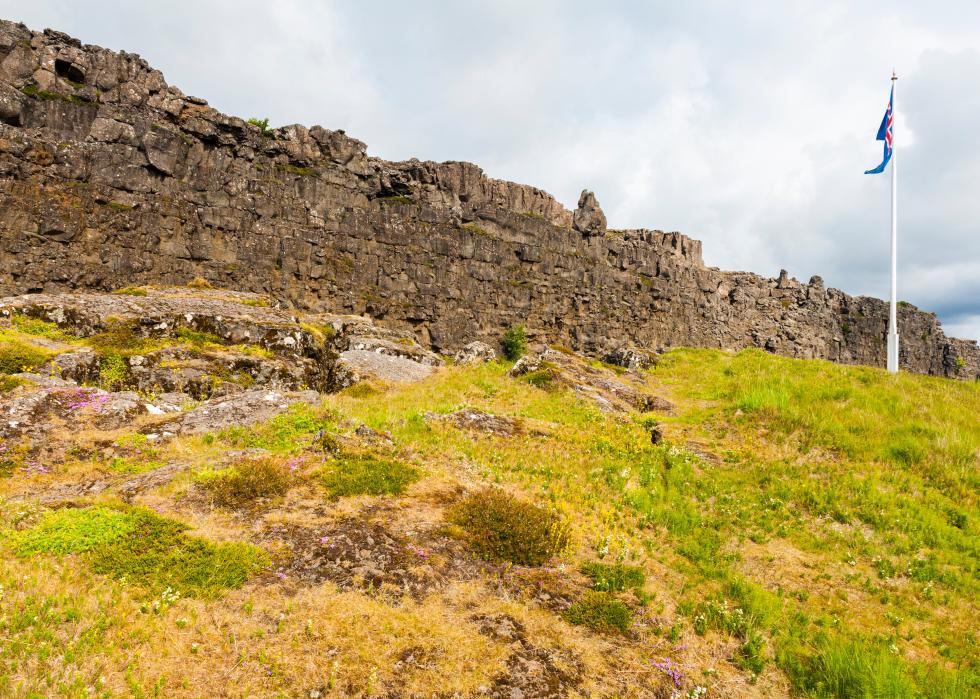
50 / 50
Filip Fuxa // Shutterstock
Thingvellir
Thingvellir, established by the Vikings in the year 930 A.D., is the site of the world'south oldest parliament, in regular use until the 19th century. Not only did it play an important function in artifact, information technology also served as a symbol in the Icelandic independence motion. It's at present considered one of the land'due south "holiest" sites, according to Iceland magazine.
You may too similar: Best-run cities in America
Trending Now
© Stacker 2022. All rights reserved.
Source: https://stacker.com/stories/4988/50-greatest-archaeological-discoveries-all-time
0 Response to "20 Things You Didnt Know About Archeology"
Отправить комментарий